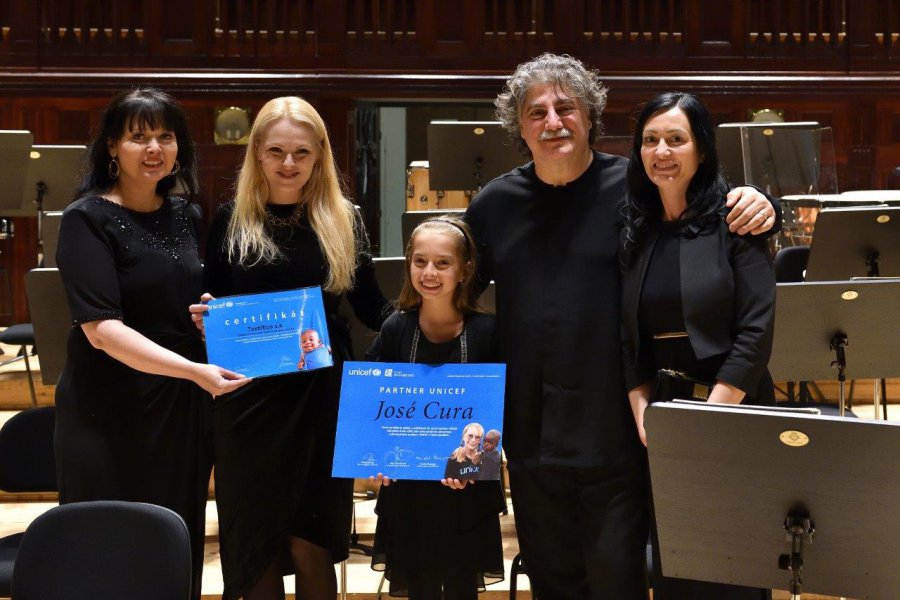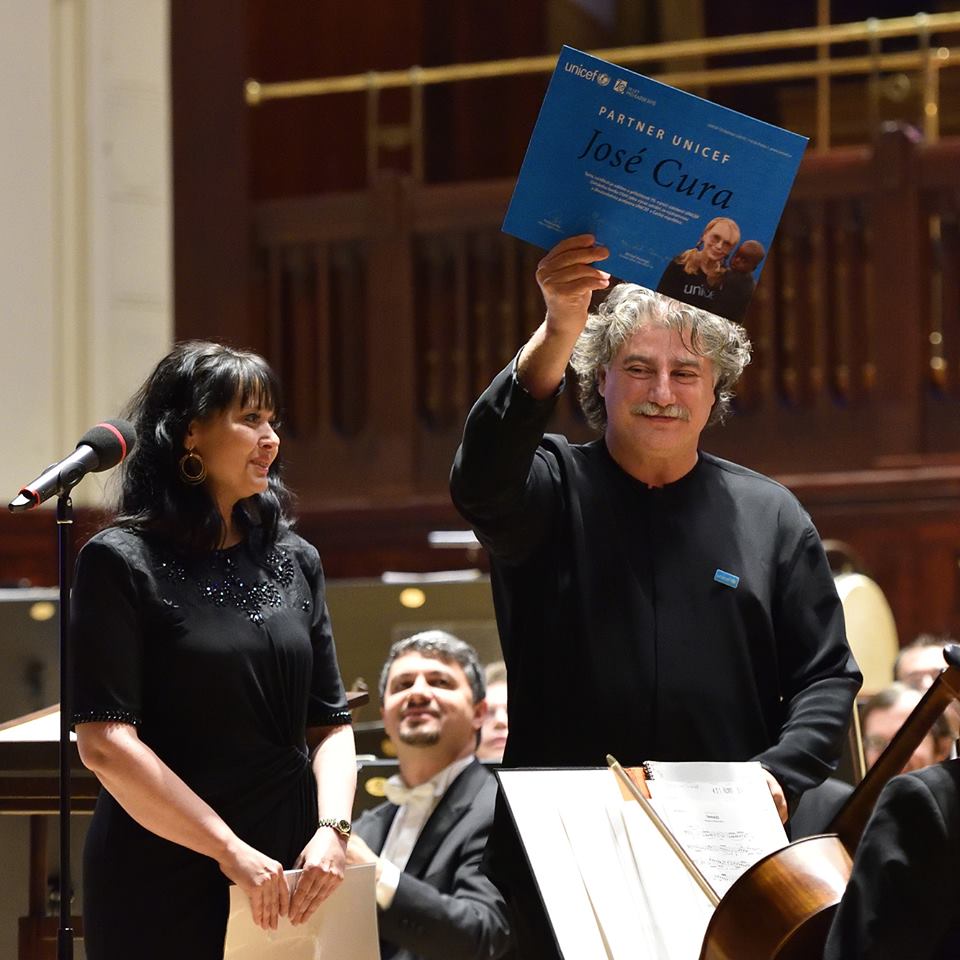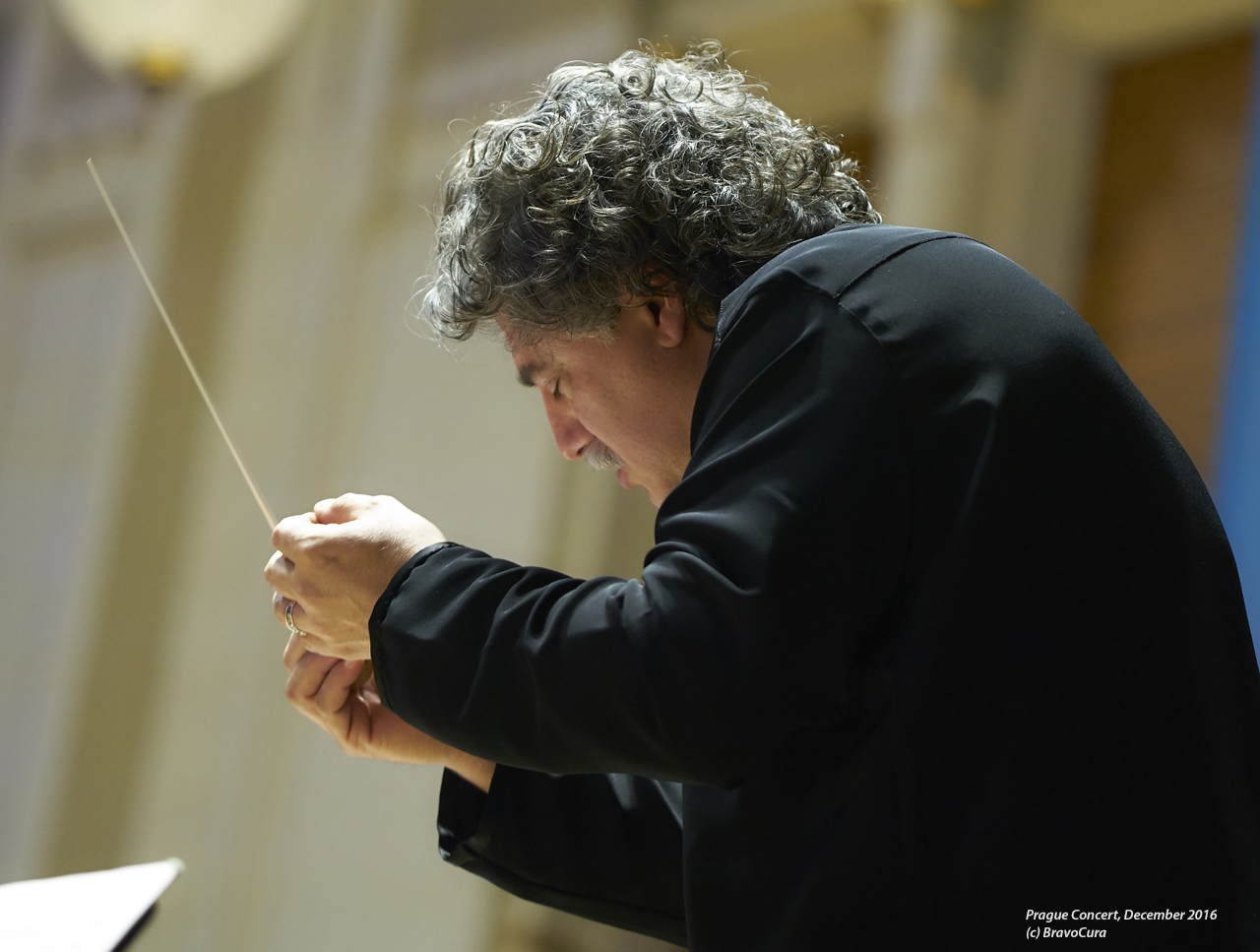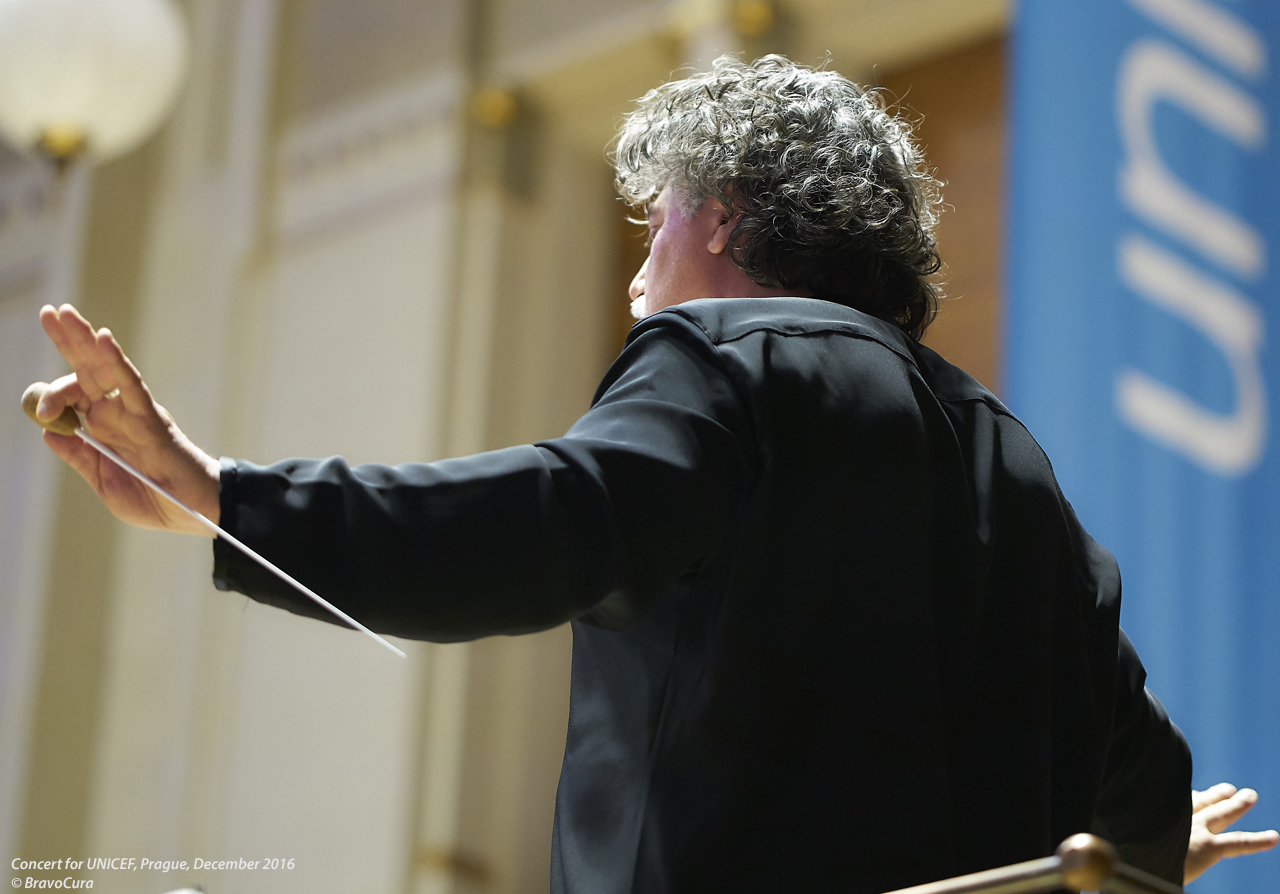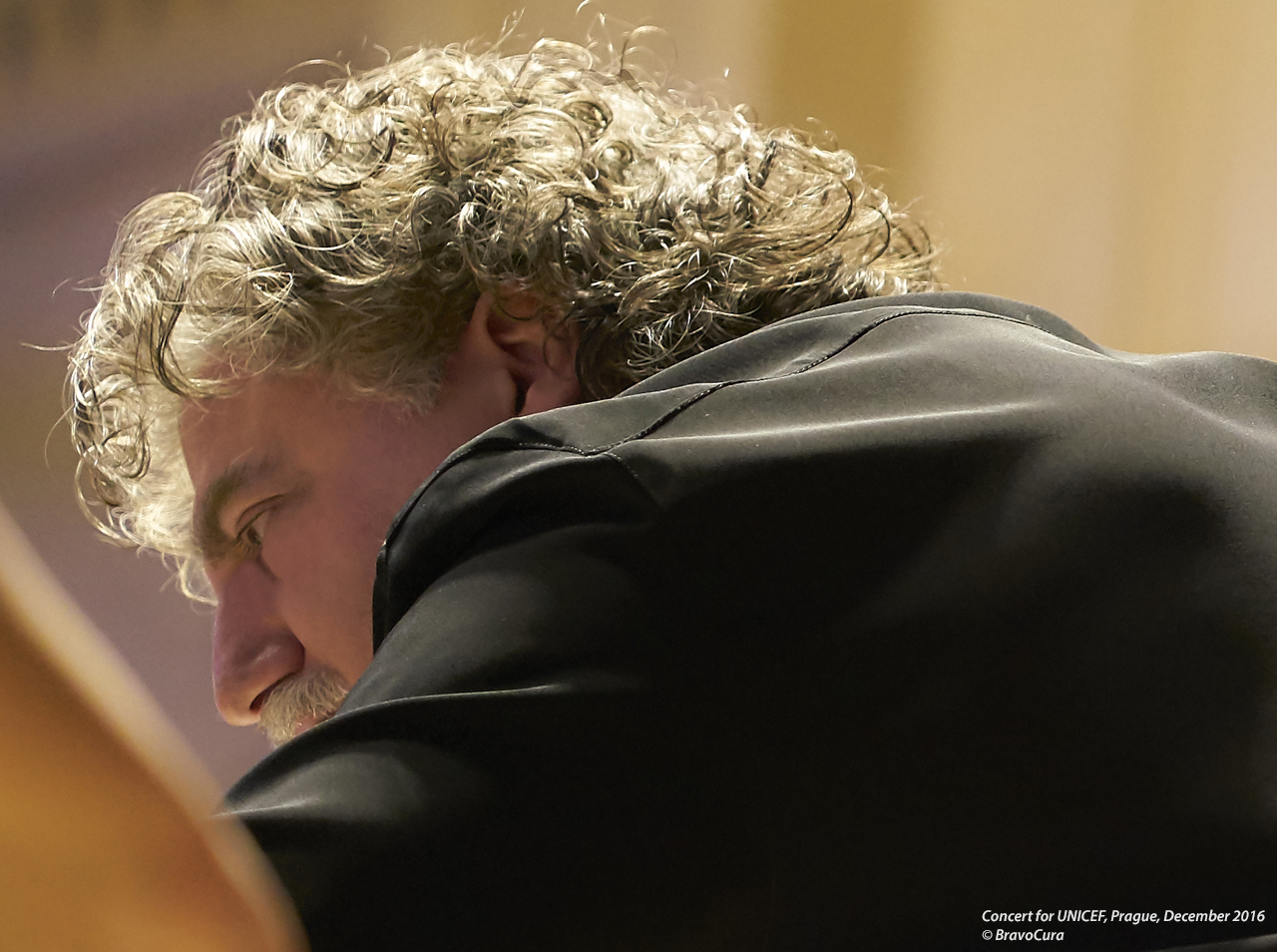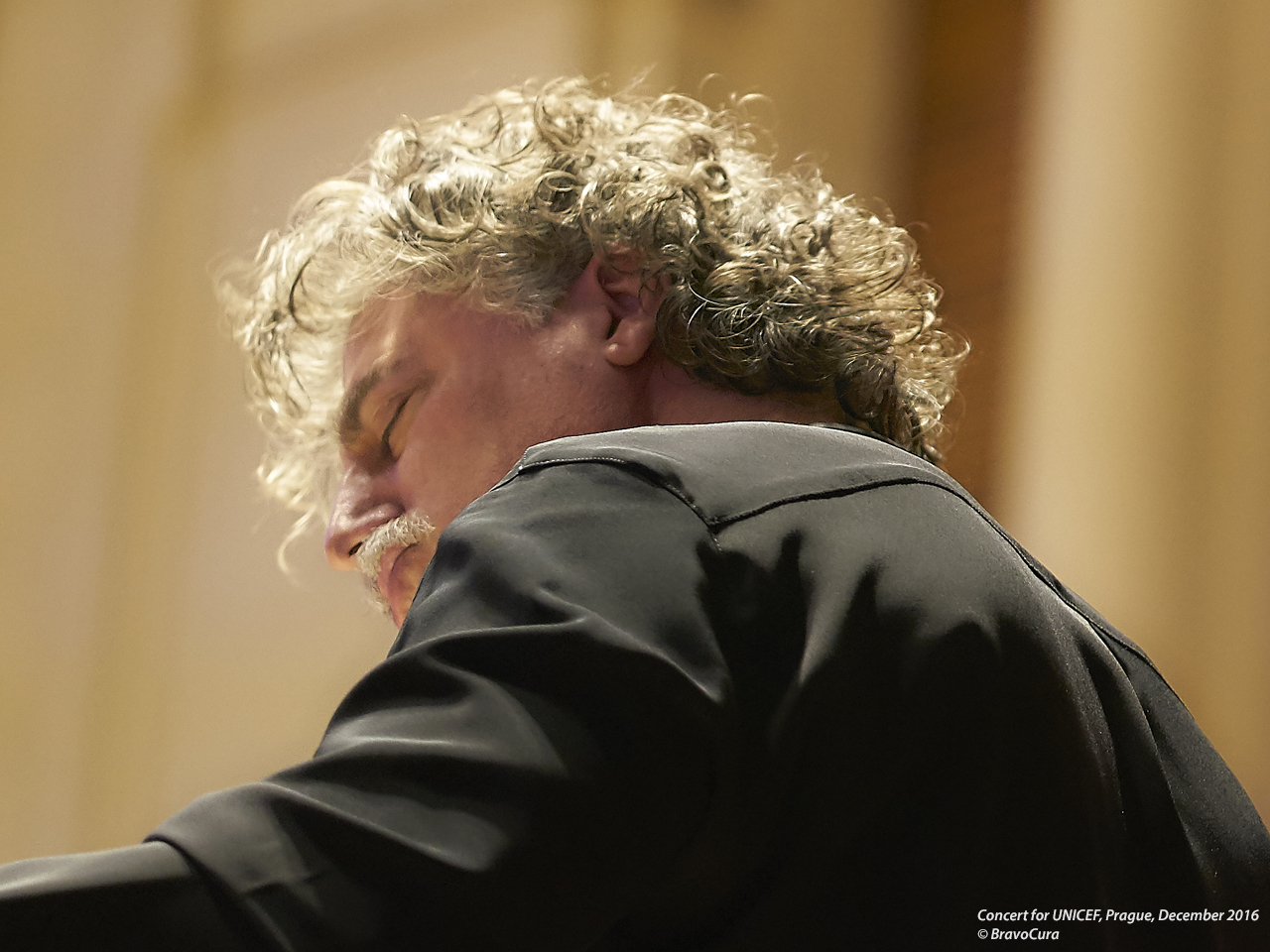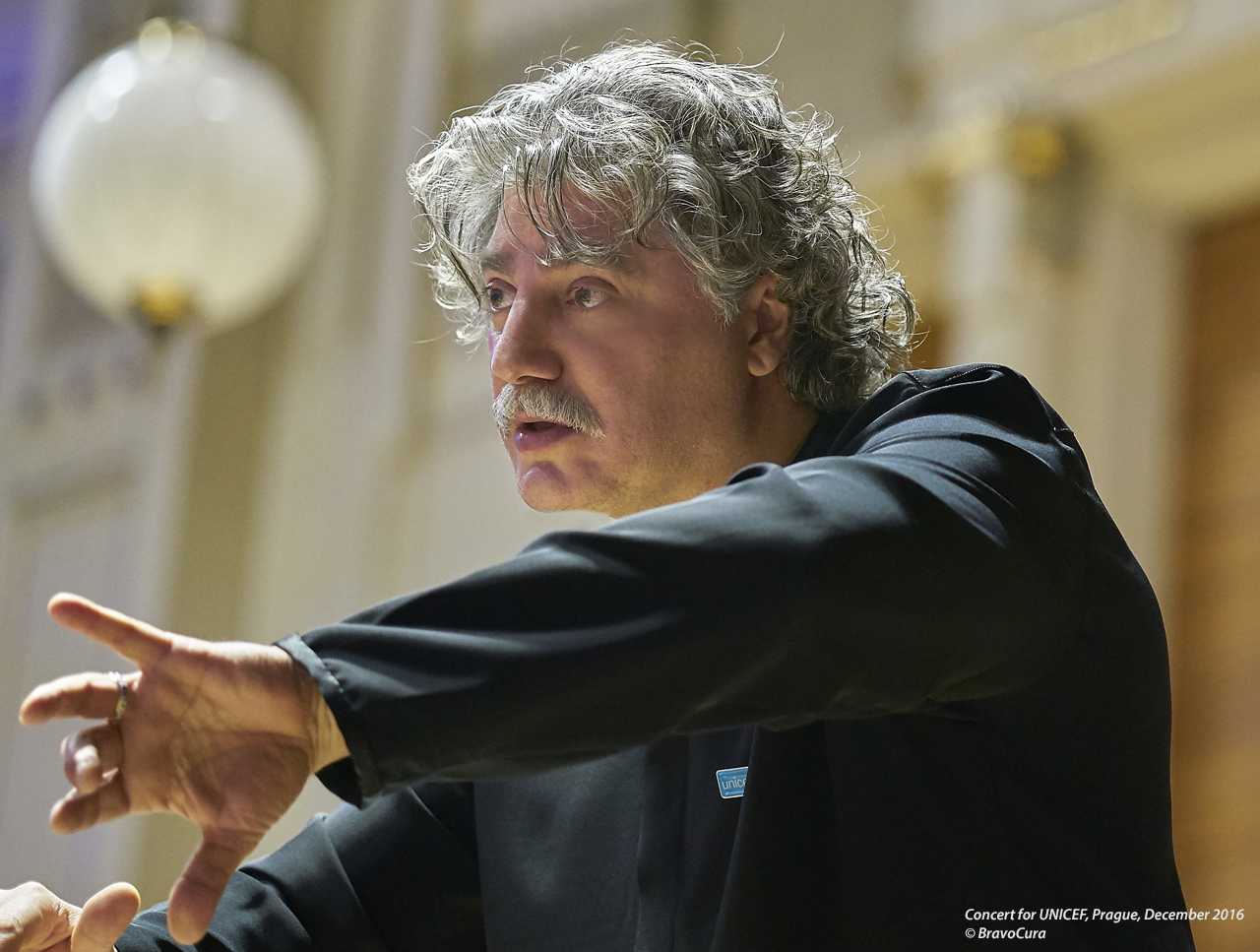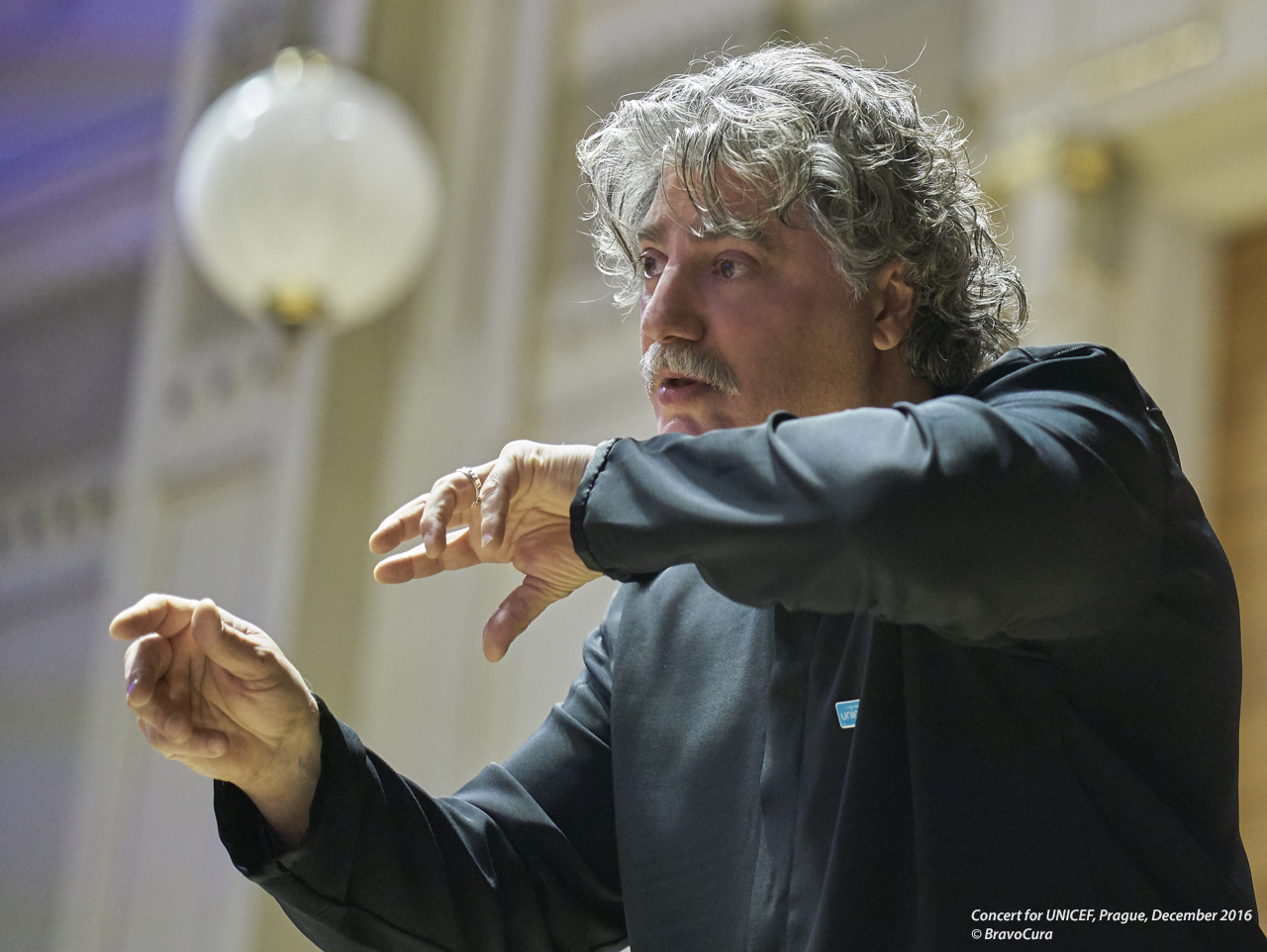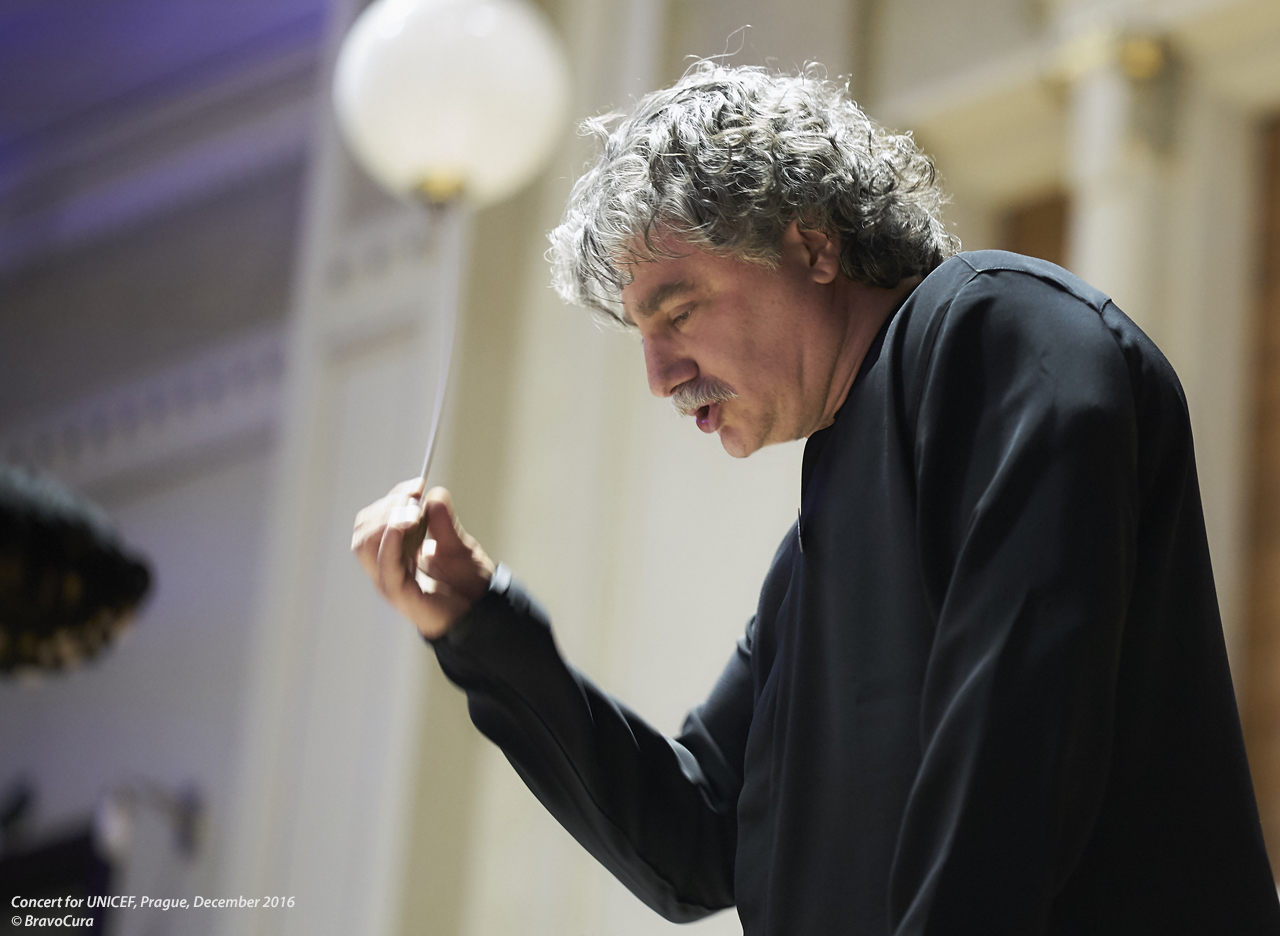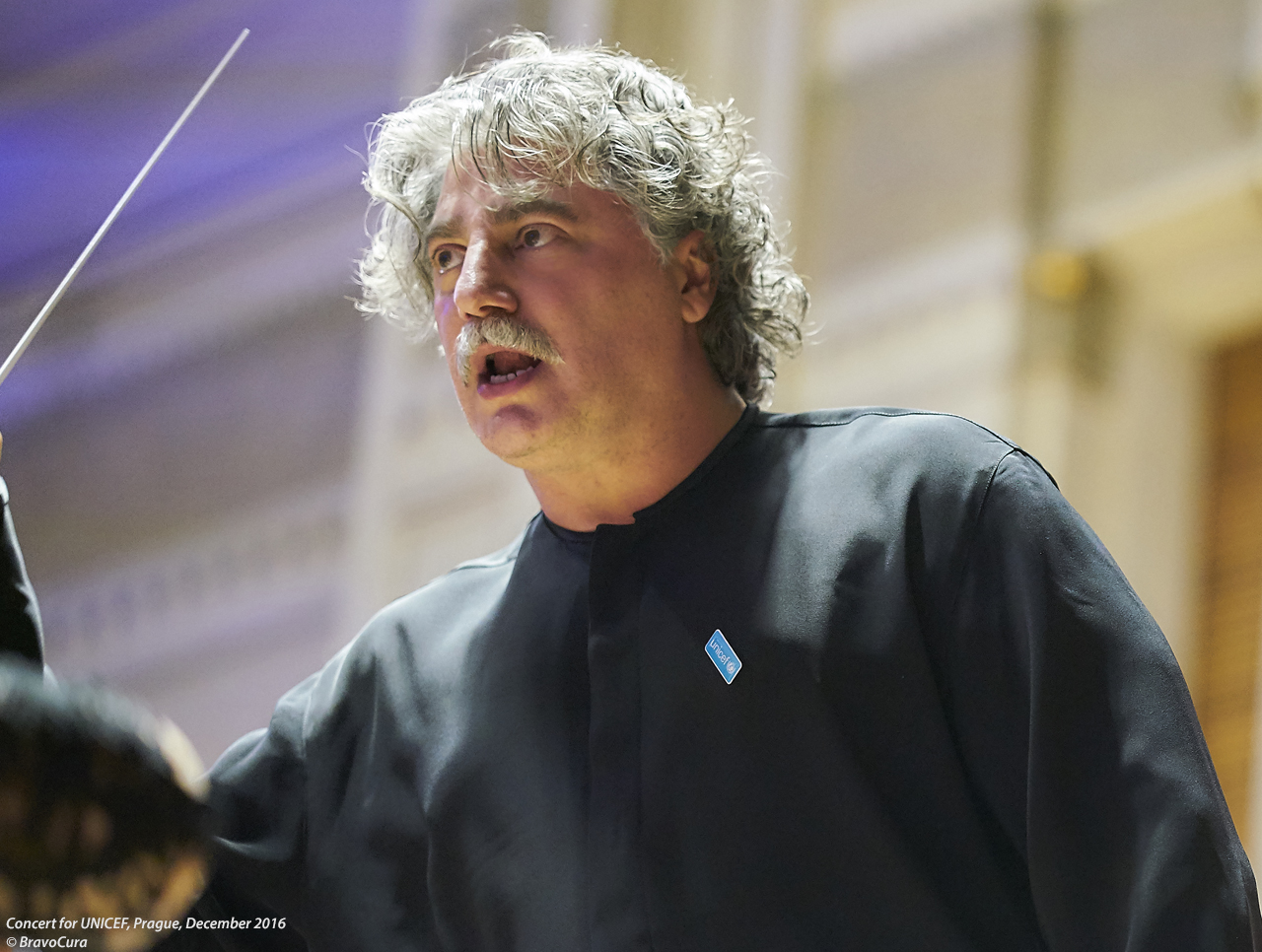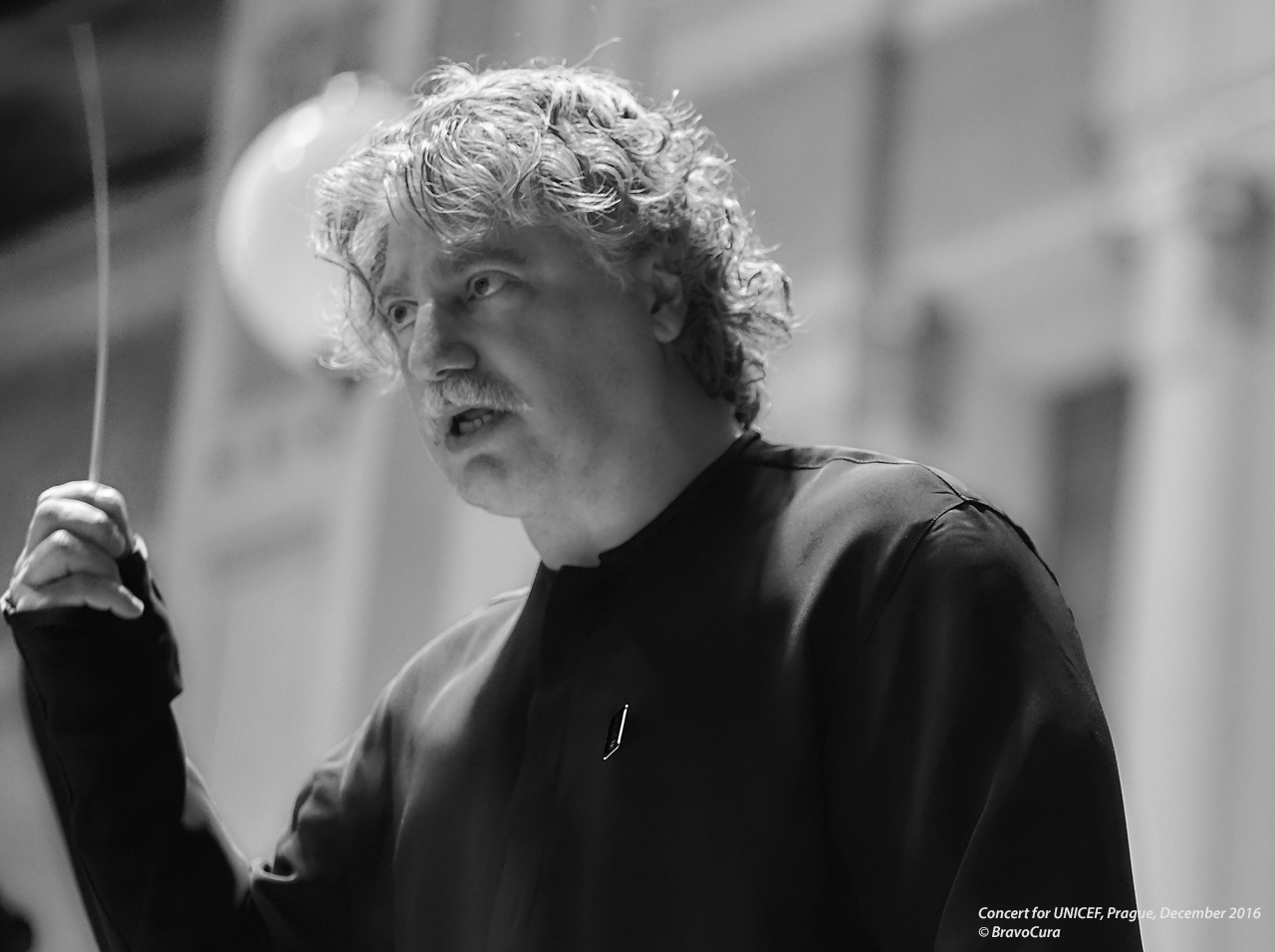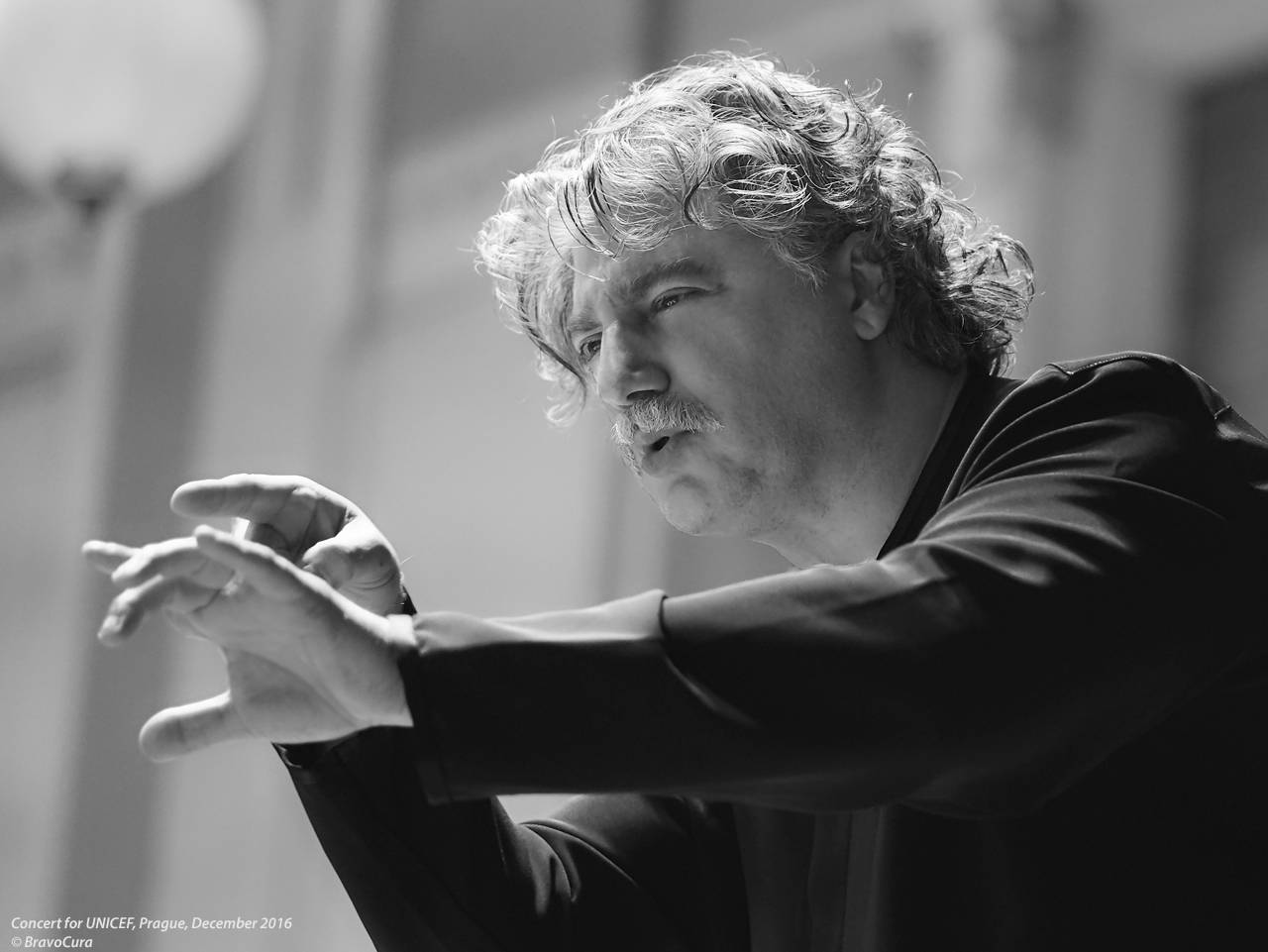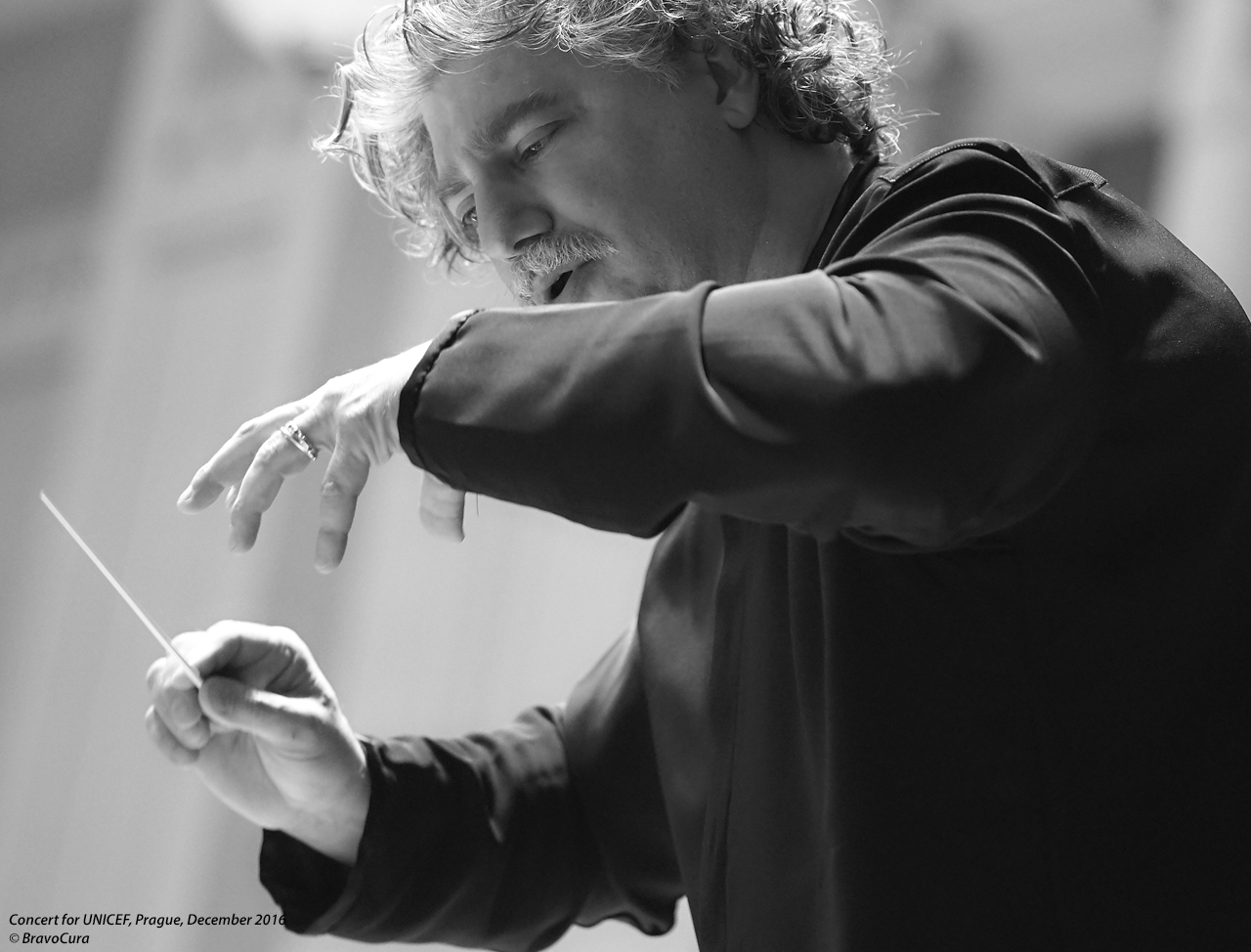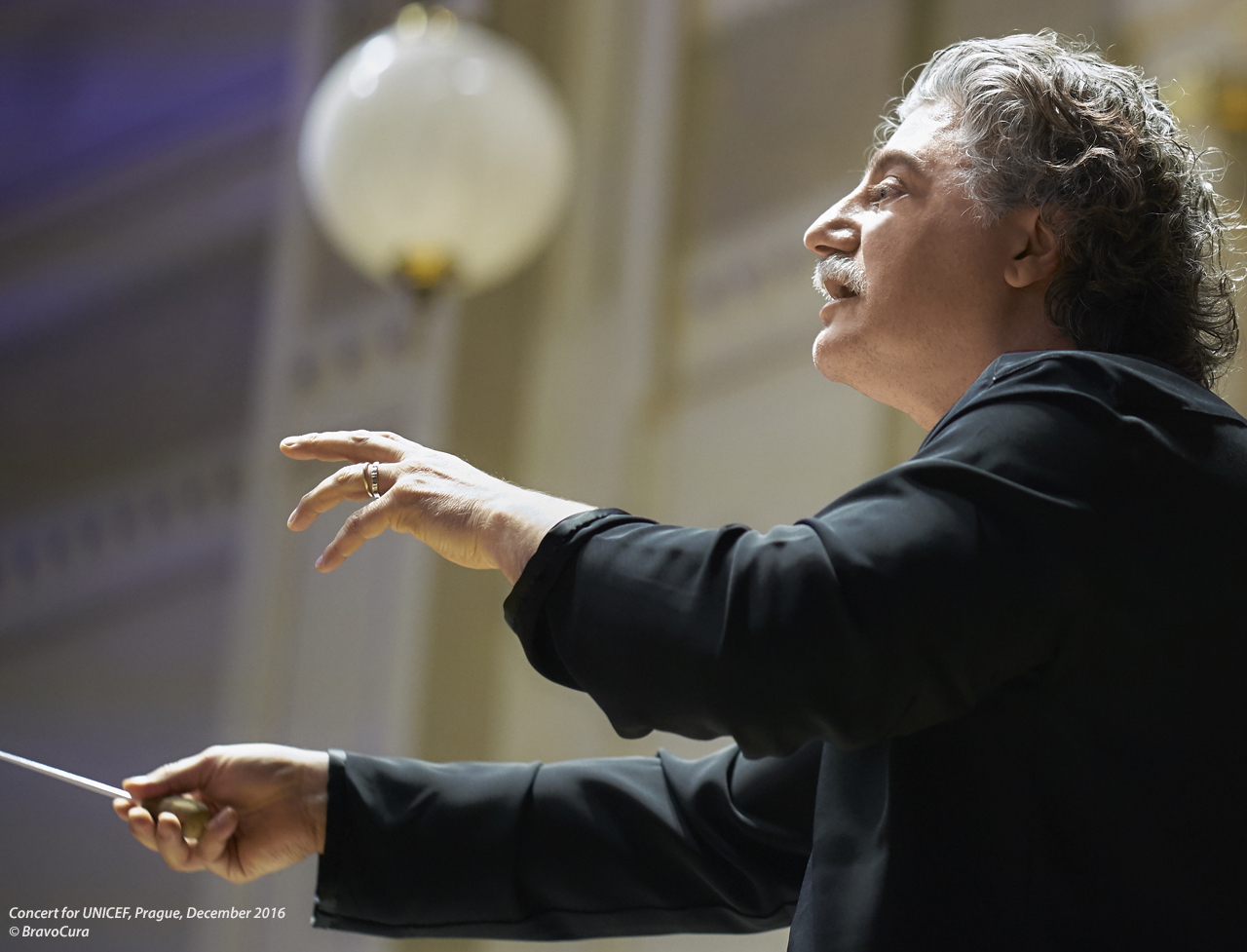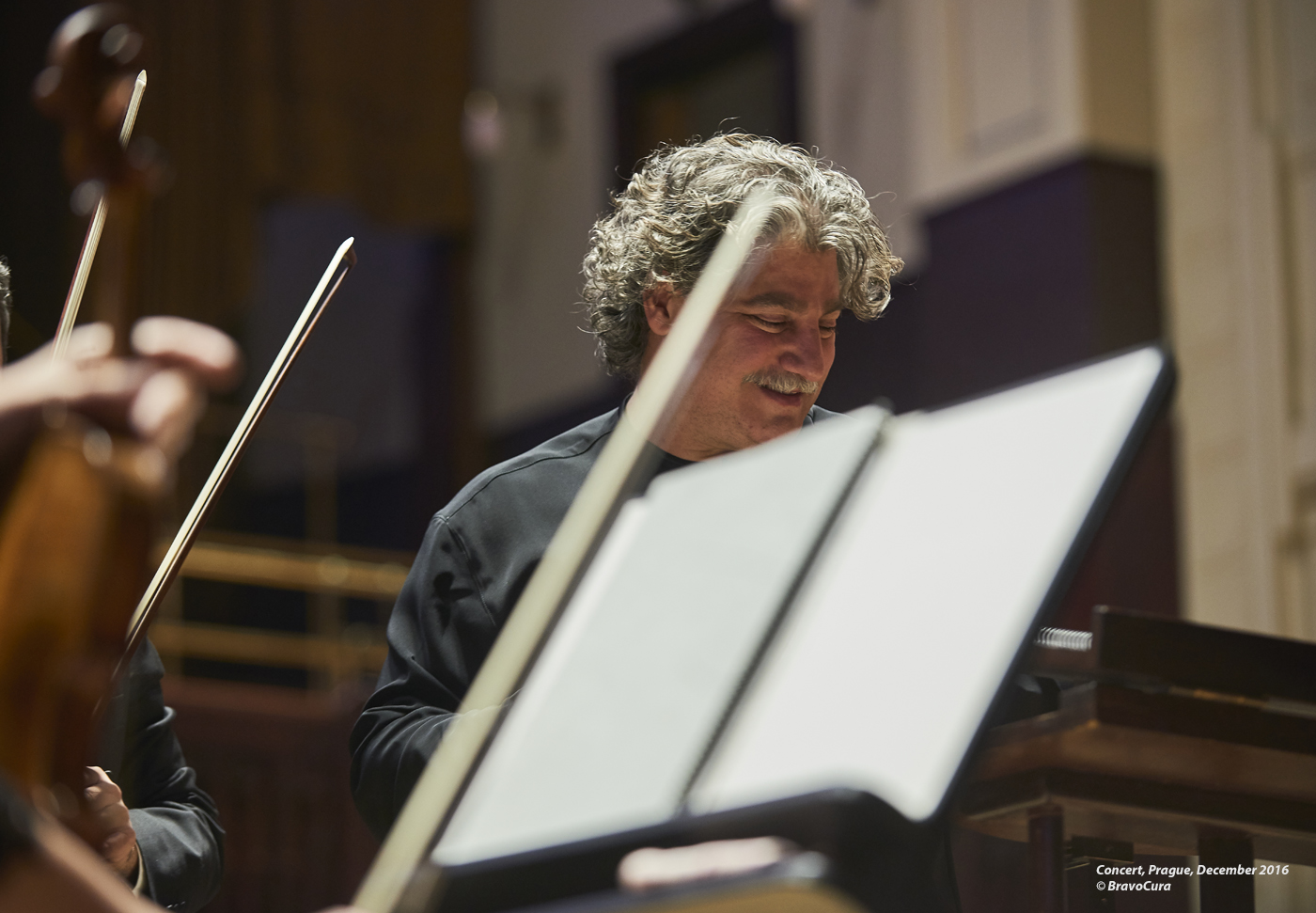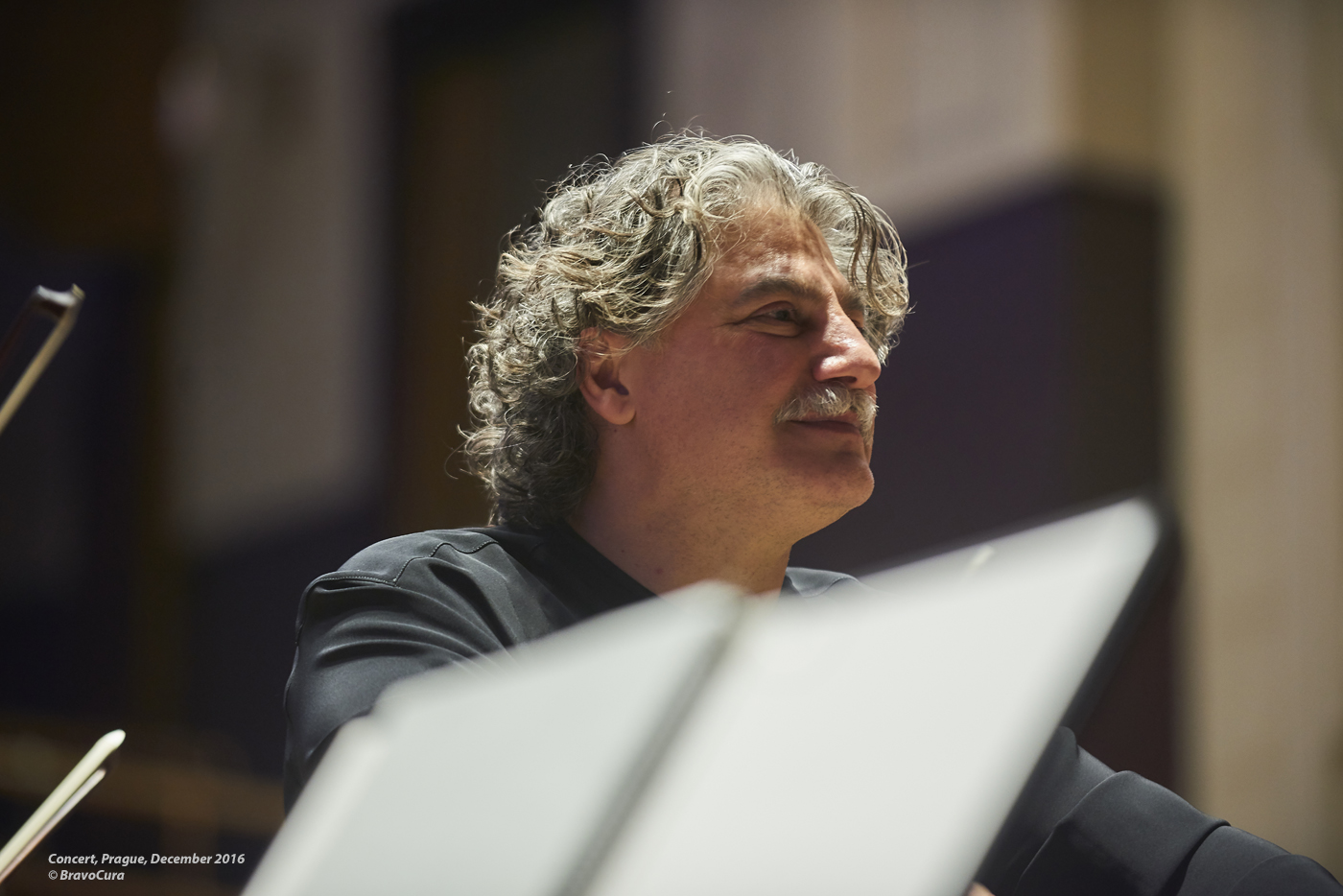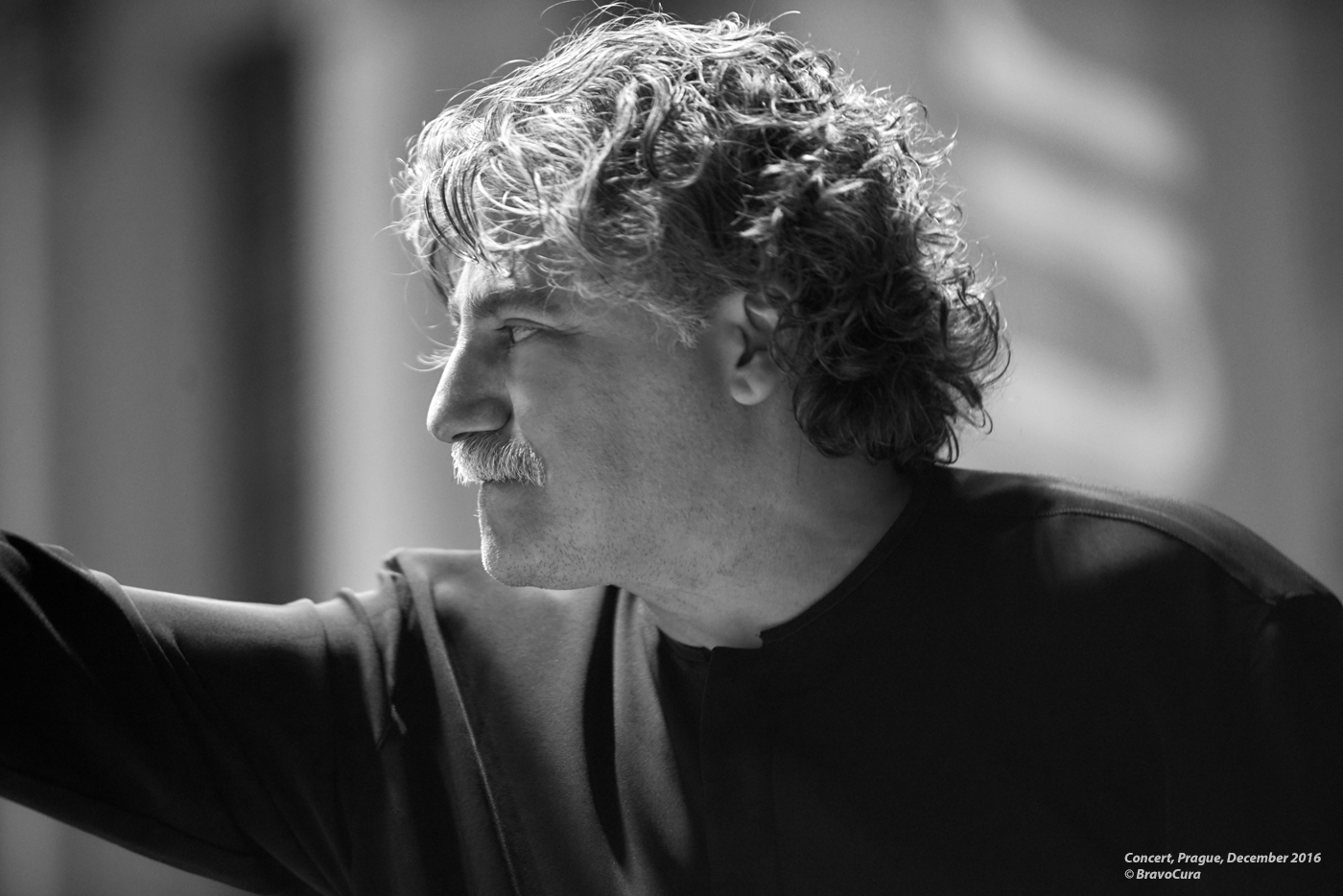|
The Magic of the Two Concerts of
José Cura and Prague Symphony Orchestra (FOK)
10 and 11 February 2016
Municipal House
Report
and Photos by Zsuzsanna Suba
After José Cura’s first two concerts – including his singing
performance of the world premiere of the orchestral version of
his musical-literary drama “If I die, Survive me!” he composed
for Pablo Neruda’s poems - with FOK in last October, these
recent occasions represented his second thematic concerts of his
three-year artistic residency here with FOK in the Municipal
House of Prague. This time he took on the multiple roles of
conductor, choirmaster and composer also conducting his own
composition as part of the rich program. The program somehow
reflected the characteristic steps and features of Cura’s deep
musical background and path according to his original vocation
when he sang in choirs and primarily worked as choirmaster,
composer and conductor. He, the musicians of FOK and the invited
singers and choirs offered wonderful achievement on both nights
and harvested memorable success. José Cura acted like a magician
conjuring various stunts out of his pockets including an
extremely powerful and sensational interpretation of
Rachmaninov’s magnificent Symphony No. 2.
Programme:
SERGEI RACHMANINOV Vigil
(selection) („Vespers”)
OTTORINO RESPIGHI The
Sunset („Il
Tramonto”)
JOSÉ CURA Magnificat
SERGEI RACHMANINOV Symphony
No. 2 in E minor Op. 27
Maria BISSO | soprano
Dagmar PECKOVÁ |
mezzo-soprano
PRAGUE PHILHARMONIC CHOIR
Lukáš VASILEK
| choirmaster
CZECH CHILDREN’S CHOIR JITRO
Jiří SKOPAL |
choirmaster
PRAGUE SYMPHONY ORCHESTRA
José CURA |
conductor
Full house welcomed both evenings. The ambitious program
consisted of rarely performed and interesting pieces. These
involved increasing challenges for the musicians and their
conductor regarding to the difficulties and complexity of these
musical works. In the first part of the concert we listened to
a mixed choir, followed by a mezzo-soprano with string
orchestra, and then we had a mixed choir, children’s choir,
symphonic orchestra and soprano together on the stage performing
the works of Rachmaninov, Respighi and Cura. We learned from the
program booklet, that Sergei Rachmaninov and Ottorino Respighi
are two of Cura’s favourite composers. Indeed they all were well
equipped with romanticism, passion and the ability to project
and display extended emotions including joy and melancholy too.
After the break we listened to the full Prague Symphony
Orchestra with a very strong string department on board in
Rachmaninov’s huge Symphony No. 2.
Each of the three works of the first part of the concert had
almost the same, comfortable length of about a quarter of an
hour. The first number of the evening represented five short
songs from Rachmaninov’s Vespers, which is an a capella
choral composition and the texts were taken from the Russian
Orthodox “All Night Vigil” ceremony. It was sung by the
spacious Prague Philharmonic Choir. The singers occupied the
rear wall of the stage standing on and filling the upper levels
of the gallery in the podium in more rows. José Cura conducted
the singers with his hands only without using a baton. They all
lived together with the vivid music creating a perfectly
sharpened, unique sound of high purity and tonal beauty. We were
touched by the beautiful development and unity of the
performance as well as by the diversity and dynamism of the
sublime, haunting melodic lines. The selected pieces conveyed
lively and yet solemn atmosphere in their recurrences and nice
connectivity. José
Cura and the choir perfectly
highlighted and extended the
exceptional effects of the sound emphasizing the clarity of
intonation, bare power and fineness of human voices. I have to
admit I’ve never heard such a large choir producing this kind of
highly-polished, passionate and still very airy and natural
performance before. I loved those beautiful moments as they
froze the sound of the different voices in perfectly shaped
ensembles showing superhuman accuracy and quality. They
provoked the admiration of the audience giving real pleasure and
unknown surprise to us wishing to know more about this
repertoire in the future. Great applause granted them for this
achievement.
Then Dagmar Pecková mezzo-soprano came to the stage and was
accompanied by the string part of FOK in Respighi’s vocal work,
Il Tramonto (The Sunset). Respighi’s lyrical drama was inspired
by Shelley’s poem. The mezzo-soprano and the strings acted
together to evoke the tragic story of a young couple in which we
heard the romantic memories of the woman about her dead lover
including also the tragic end and her suffering and laments of
her mourning. We enjoyed a nice interaction between the
different parts of the delicious orchestral music and the vocal
while we were listening to the fine, subdued voice and soft tone
of the singer during their intimate, emotional performance. The
music was abundant in soft, sweet, romantic tones but as the
story progressed it became fearful and dark. This was a
difficult piece indeed requiring great attention and
concentration from everybody. The real peculiarity of their
performance was the way as the sound of the strings undulated
with impressionist brushwork like an escorting landscape of the
expressing emotions in terms of intensity and colourfulness.
Their role varied according to the emotional range of the vocal
passages varying from touchingly soft, gentle attendance to more
powerful, leading force. José Cura did an elegant and
comprehensive job in the podium. They managed to create a
colourful harmony between all the participants and drew our
attention to the particular, smart solutions of this exotic
music of great melancholy. Yet, the volume and dynamics of the
vocal performance could have moved on greater scale a bit to
fully grab our imagination during the piece. A good amount of
applause arrived to the stage from the audience acknowledging
the nice performance of this rarely performed particular work of
Respighi.
Then we were looking forward to encountering with the Czech
premier of Magnificat, José Cura’s own composition. He composed
it in his youth, at the age of 26 in 1988, in the early phase of
his musical carrier inspired by the birth of his first child.
The only performance of the piece, its world premiere was held
in the Teatro Massimo Bellini di Catania in 2015. It is worth
quoting José Cura’s words from the program booklet: “The
Magnificat, in my view - while running the risk of appearing
irreverent, yet never wishing to be blasphemous - is,
certainly, the quintessential Marian Song of Exultation, but it
is also the song of an adolescent Mary, full of dreams, as well
as fearful of what was to come.” Thus he imagined her situation
in a “more human light” which completely reflects Cura’s
creative spirit and intention to express Mary’s extreme,
shocking and cathartic feelings in this composition.
Every part of the stage was filled with musicians from the top
to the bottom of the stage (Prague Philharmonic Choir, Czech
Children’s (Girl’s) Choir Jitro, FOK orchestra and Maria Bisso
soprano), so more than 100 musicians were gathered together
under the direction of our conductor representing a great
spectacle in this beautiful concert hall.
The Magnificat had an enormous impact on the soul of the
audience through the musicians’ splendid performance. José Cura
delivered a fresh, exciting, dramatic and profoundly modern work
representing wide arrays of emotions and dynamic structures
working with gripping musical ideas. The soprano Maria Bisso in
Mary’s figure launched and led the piece in her gradually
revealing hymn, and then all the other participants joined to
her. They soon produced a richly shaded, powerful and rhythmical
sound accompanying her narration. Each main participant had
distinct role but they worked together in an amazing, crystal
clear harmony and control lead by José Cura’s superbly
sharpened, warm and motivating guidance. The exceptional power
and quality of their performance always ensured the high tension
and fluent connection of the various musical parts and recalled
the exploring attention of the audience too. Maria Bisso’s slim
figure represented fragility but she also appeared as a real,
human figure in her shining, determined and transparent soprano.
Many feelings were palpable in her singing lines ranging from
fear, pain and anxiety to expectation,
joy and dignity responding also to the reactions of the
surrounding musical environment. The choirs and orchestra acted
as an untouchable, majestic source of sounds first echoing
together with the presence of little bells too.
Then their cooperation became more
complex and it conveyed heated, diverse emotions. The music
effectively displayed the mixing and alternating moments of the
various interactions of the protagonists showing different
touches and effects of the reactions in terms of intimacy or
publicity according to Mary’s prayer.
It was interesting to discover how the various appearances and
connections of human voices became the main protagonists. The
orchestra and mainly the strings were responsible only for
imposing accompaniment, while the other instruments had little
roles only for the sake of some specific effects. My
favourite parts were the very
rhythmical, returning and completely surprising musical sequence
when we heard the powerful, large choirs cited the words “Fecit
potentiam in bracchio suo
…”
in different order and growing intensity creating a really
dramatic, almost shocking, loud whisperings followed by the
sharp, jerky, scream-like sound of the violins expressing
perhaps their admiration or initial doubt about the news of the
miracles.
After a sudden break we heard the commotion of emotions in the
subsequent whispers, little screams and in the erupted, united
sound of the choirs and orchestra. When the voices subsided,
some moments later gathering all the singers and musicians
together the drama started to
develop again gradually even with
greater force, almost tearing the swirling
musical melodies apart at one point
with the returning effects of the previous, exalted sequence. In
the meanwhile another, new musical layer appeared bringing the
central motif of the piece to the light in the revived soprano
solo. The concluding high-tensioned
part of the piece centred mainly on the continuation of Mary’s
hymn emphasizing the role of the soprano and the Children’s
Choir here. We experienced a truly exceptional
performance of the Children’s (Girl’s) Choir Jitro, in the form
of their unique, ethereal and
resounding sound which often softened the dramatic content of
the music and lifted it up with youthful innocence and sublimity.
All the beauty, power and whirling emotions of the singers and
musicians were united into a great, final climax at the end
crowned by a steely, God-like bass voice “Gloria
Patri, et Filio, et Spiritui Sancto”
completed by the choirs
repeating
„Sicut
erat in principio, et nunc, et semper, et in Saecula saeculorum.
Amen”.
Then we listened to the concluding, gentle sound of the choirs,
Mary’s last words and the fading notes of the orchestra.
We were eager to join to the audience’s immediate, uniform and
intensive plaudits and eruptive emotions celebrating the
musicians and our conductor/composer for long minutes in more
returning waves. José Cura generously passed our loud and
enthusiastic acknowledgements to the singers, the choirs’
choirmasters, plus the various sections of the orchestra. Then
we all needed to take a rest in the intermission.
The main core and attraction of the concert came in the second
part with Rachmaninov’s Symphony No. 2. This music was not an
unknown piece for us in José Cura’s interpretation. He was the
principal guest conductor of Sinfonia Varsovia when he recorded
the complete version of the symphony with this orchestra in 2001
and their CD achieved great critical acclaims. I still remember
that beautiful concert when I heard this symphony live with Cura
conducting his Sinfonia Varsovia in the Wiener Konzerthaus in
2002. They earned an unforgettable, well-deserved ovation of the
audience for their glorious performance. Another miracle
happened again now, here in Prague with the Prague Symphony
Orchestra 14 years later even in another extent
considering the exceptional consistency, high quality symbiosis
and devotion of their work together producing a dazzling
presentation of the score.
I had the immediate and overall impression, that José Cura
conducted the whole concert but especially this symphony in the
spirit of his artistic credo, performing and validating the
formula of “very hot heart and very cold mind” brilliantly
throughout the evening. Cura’s guidance and conducting style was
really determined and rock-solidly confident as he led the
orchestra through the 60-minutes long music with immense
concentration and focus. He applied simple but expressive,
elegant and talkative musical instructions of his baton and body
language and he didn’t let the control out of his hands for a
single moment. He also expressed his gentle feelings (smile, joy
or praise) with small gestures toward the orchestra giving
immediate feedback to the musicians. You felt, that he had never
let a note running unnoticed during the performance of this
monumental score. Counterbalancing the subtle melancholy of the
symphony, José Cura tirelessly maintained the impetus/dynamism
of his characteristically temperamental, fresh and tight tempo
which gave a second, triumphant soul to the piece. He really
made the orchestra work hard and the musicians followed him with
open heart and unconditional devotion too. It brought fresh air
and energy into the concert hall resulting freely flying music
making of one wavelength from the beginning to the end. They
produced a wonderfully articulated performance which boasted of
its imaginative sharps, superbly dense colours, high level of
harmonic arches and vitality.
Their inexhaustible energies captivated the vivid attention of
the audience so much that we didn’t perceive the passage of
time. This was especially valid for the long, very emotional
storytelling of the first movement. It was really thunderous
sometimes and they beautifully highlighted the extraordinary
whirls of the evolving,
eruptive
and fading climaxes reminding us
to the various phases of an unpredictable, raging, turbulent
sea-storm. In the second, fiery movement their musical vigour
explored and demonstrated the thousands of musical ideas of the
composer which was coupled with playfulness and emerging, soft
lyricism. The third movement was indeed very emotional and
passionate. In the harrowing, centred, great motif of suffering
José Cura grabbed and hang on the protected rail of the
conductor’s podium with his two hands and used the swinging
movement of his body only to reflect the almost unbearable,
tearing painfulness of the melodies toward the musicians and us.
Then they arrived in perfect shape for the beautiful opening and
evolution of the triumphant highpoints of joy and rolling
relief. In the performance of the fourth, concluding movement
the musicians still preserved and even increased the levels of
energy and freshness creating continuous joy of music making.
They worked finely on the rhythmical variations and highlighted
the unrestrained, soaring sides of the melodies. They also
raised the intensity up to a large-scale vision from which there
was no return. So at the end of the symphony, when the last
notes were suddenly muted, it compelled the whole audience to
produce a united, huge cumulated sigh and expression of common
joy for this extremely powerful, incredible experience.
Then the podium was flooded by frenetic applause and other
different forms of acknowledgments of the audience. Our
conductor again happily passed his and the audience’s
compliments to the musicians and the many sections of the
orchestra. In the middle of this long celebration it was José
Cura who curbed our seemingly endless cheering leaving the
podium first and thus the orchestra left the stage too and the
concert was finished. Following the known formula, after the
performance we gladly took part in a nicely organised signing
session of José Cura and Maria Bisso to prolong the evening with
the personal encore of the artists.
We certainly will attend to the following concert of José Cura
and FOK in Prague next season too in order to experience the
particular atmosphere, power and musical enjoyment of their
concert again.
|

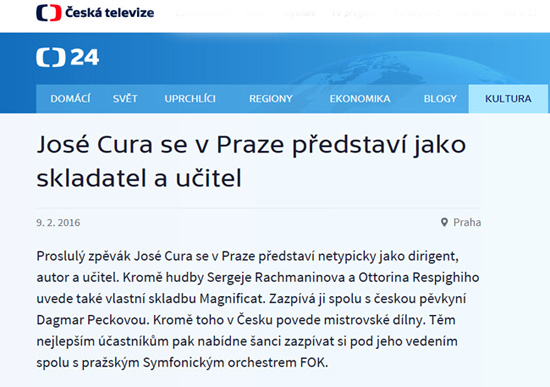










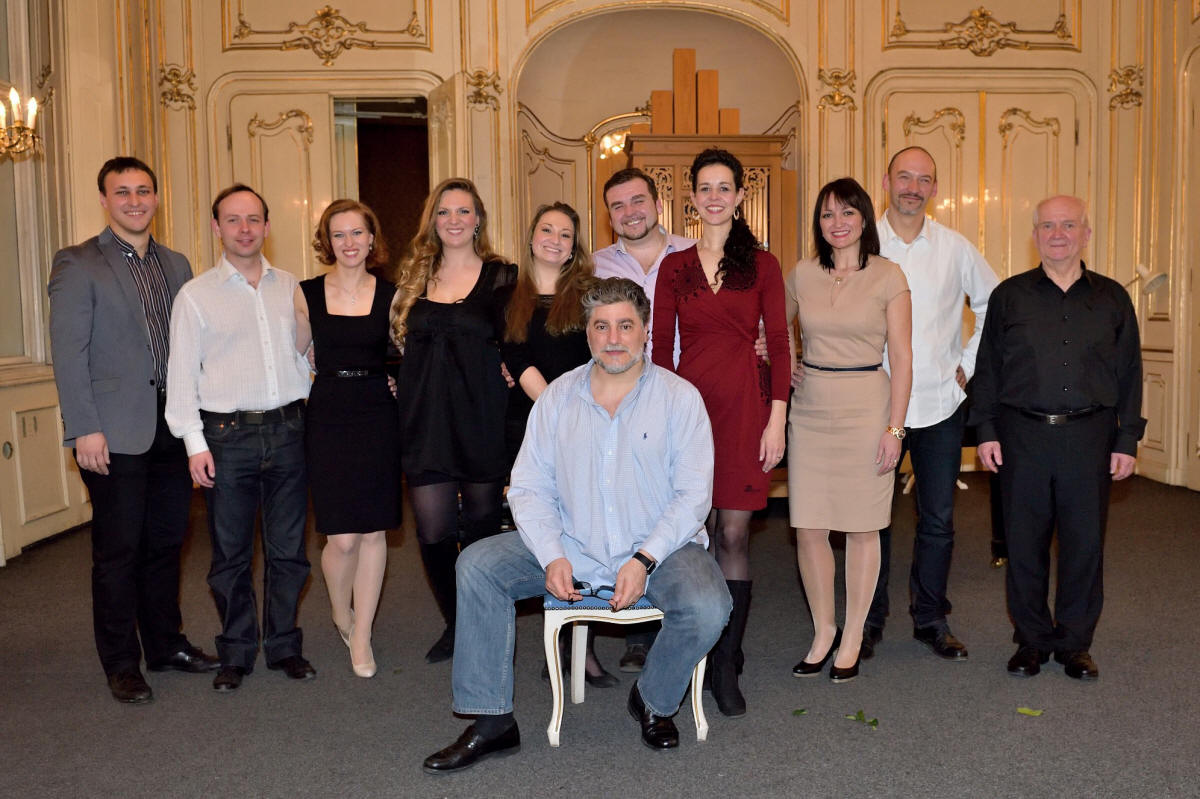


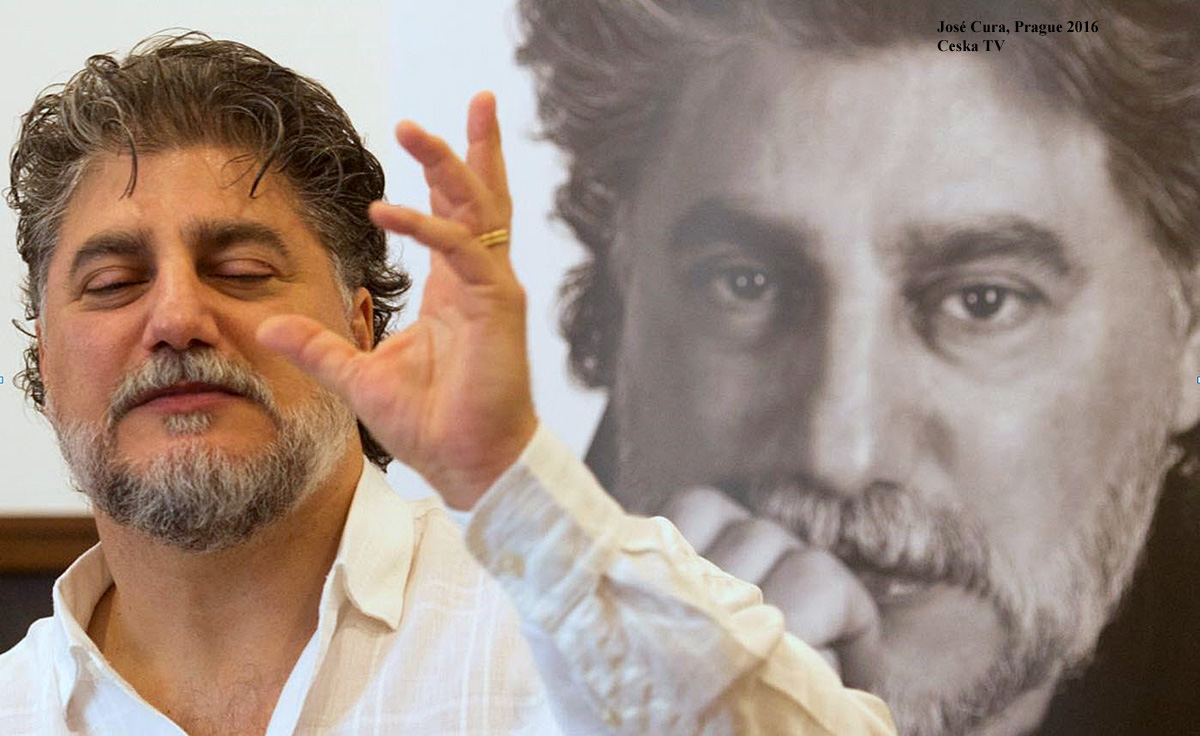
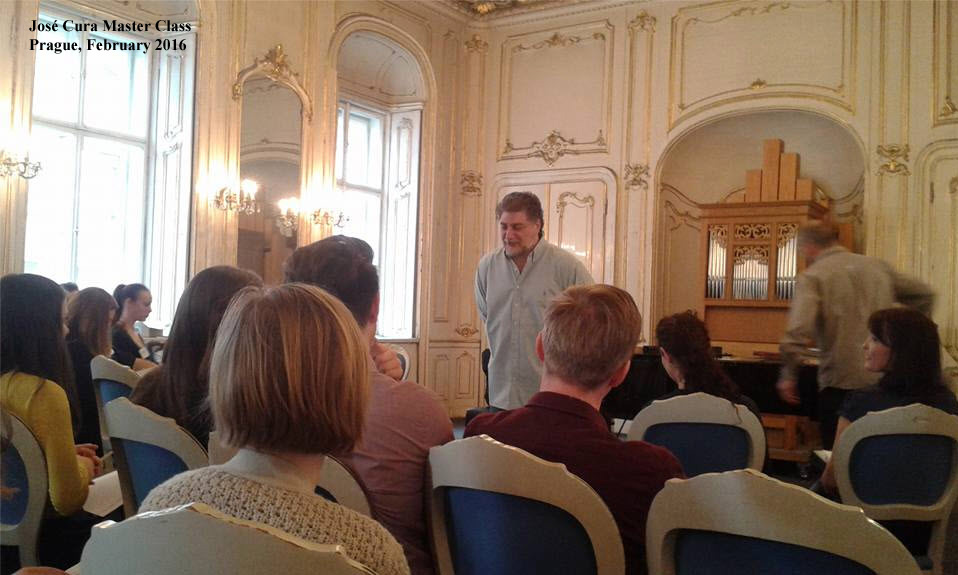
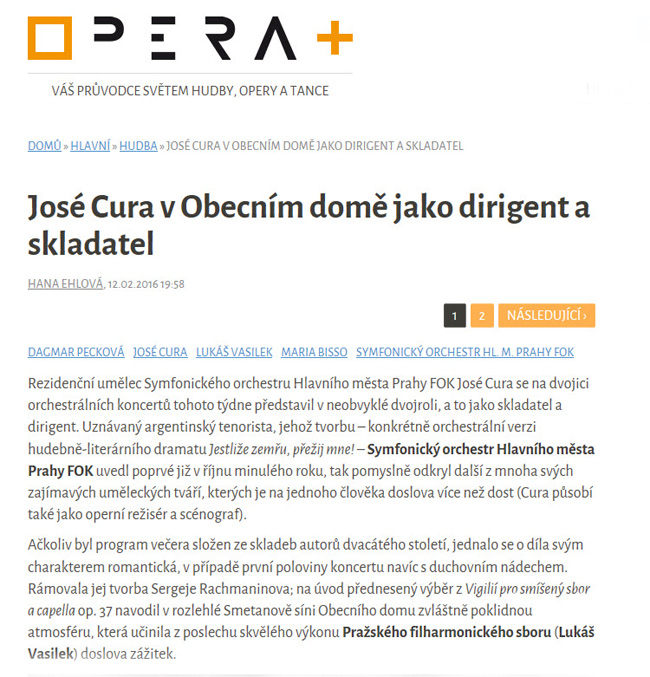




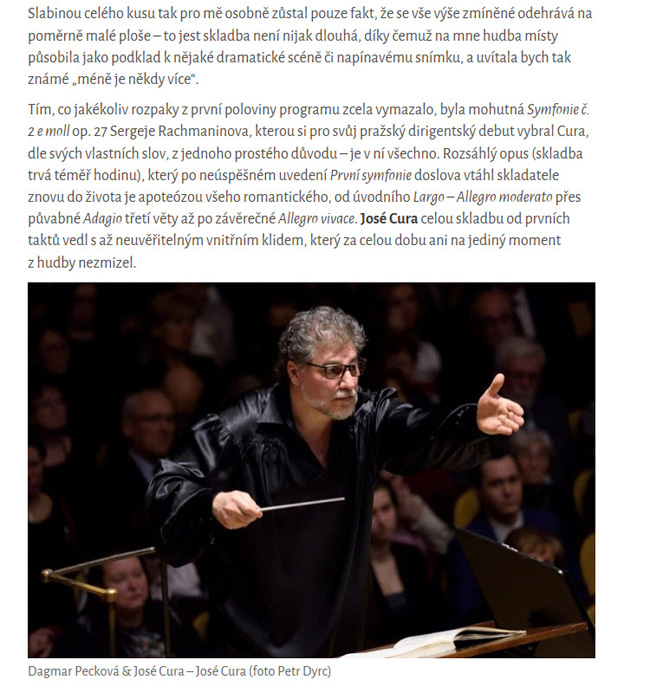
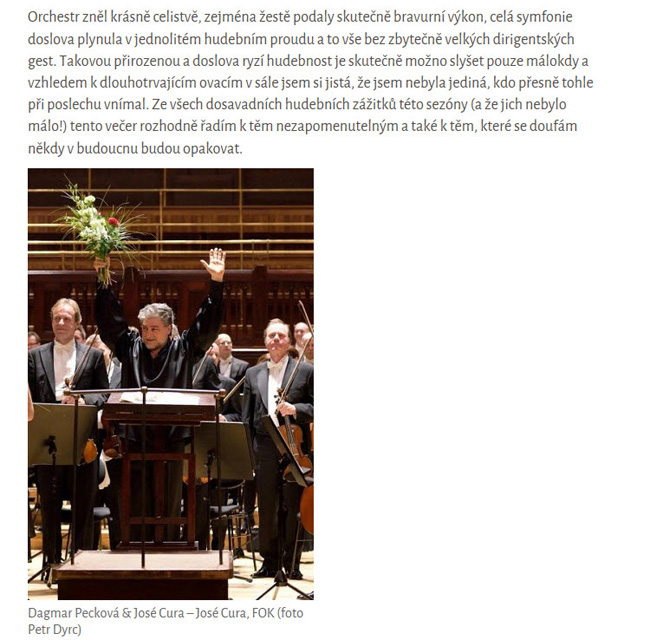
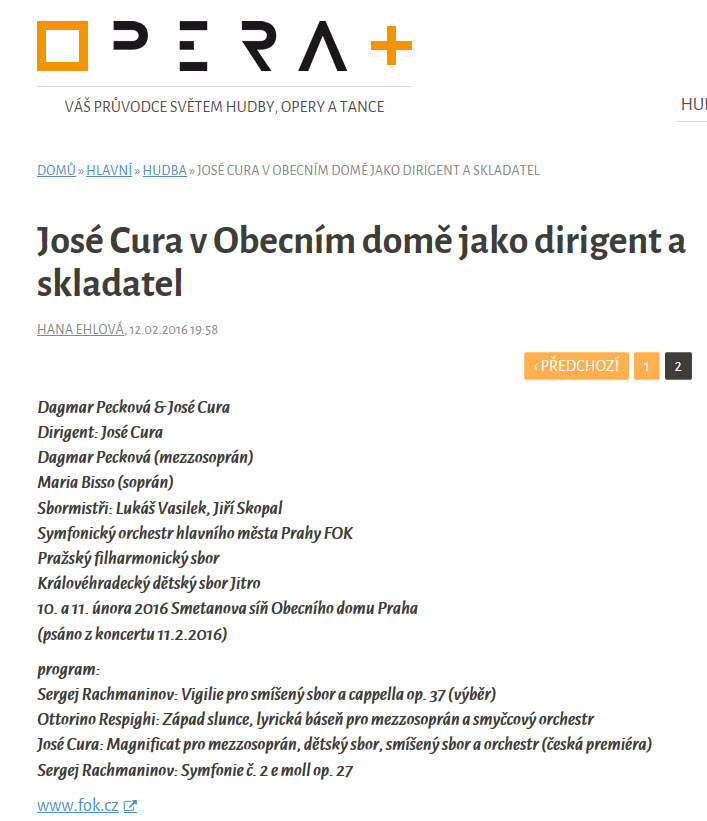







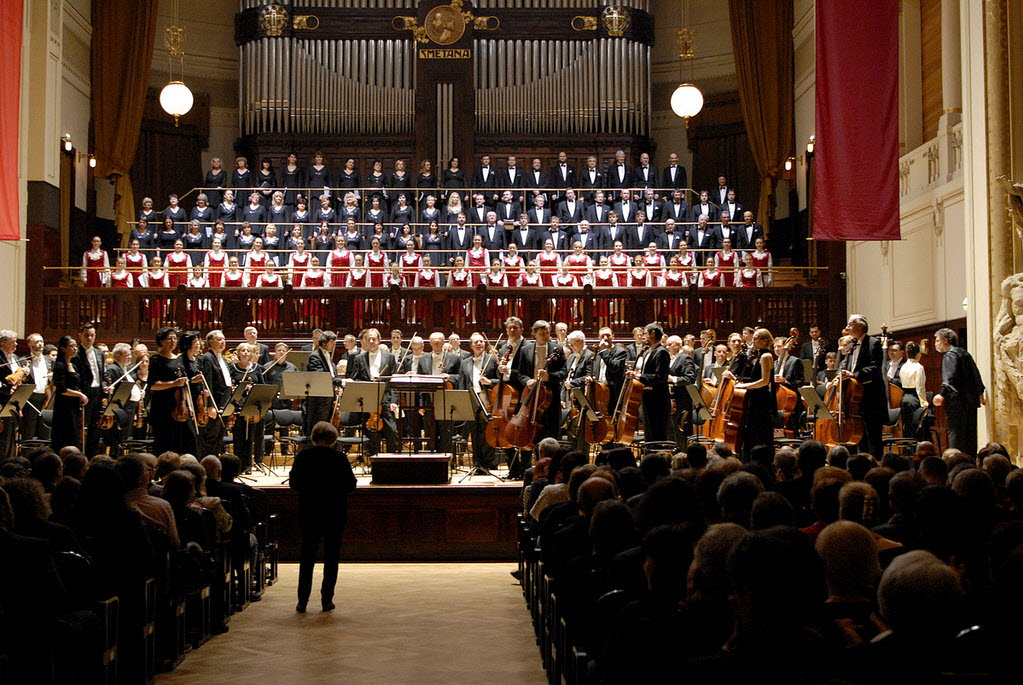


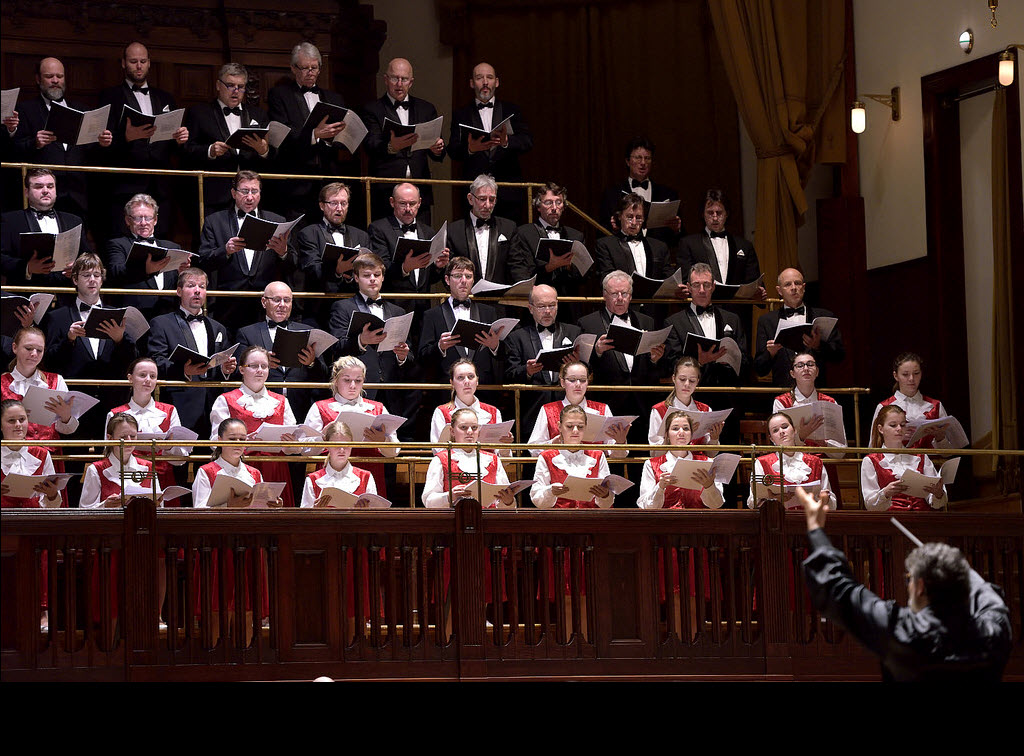
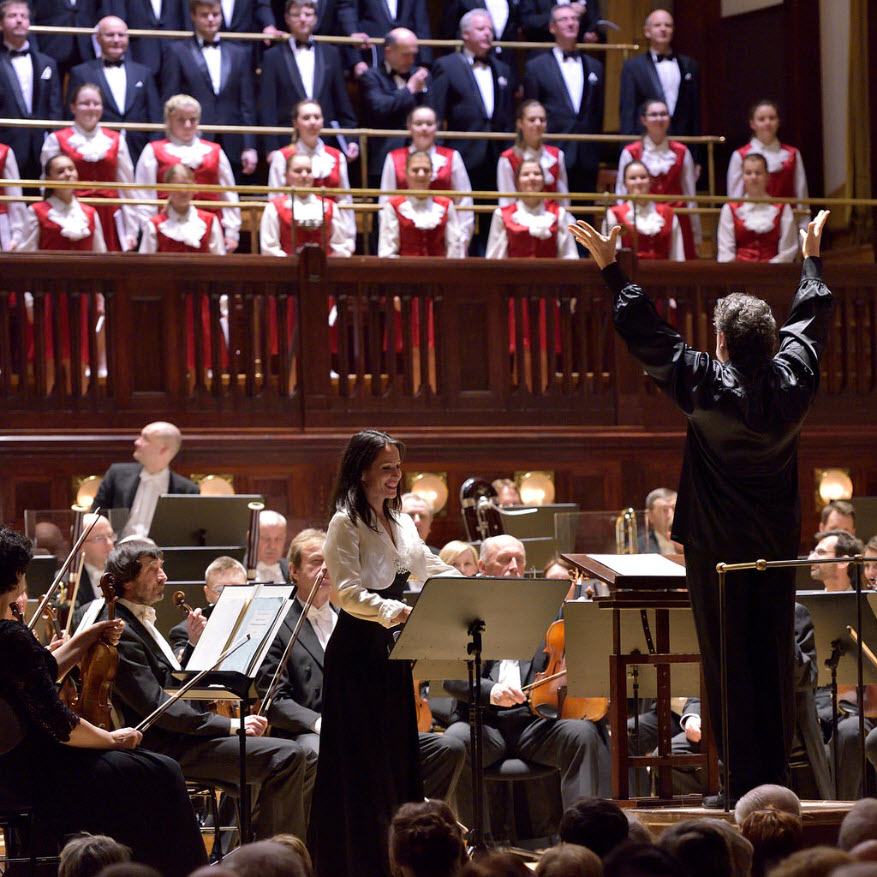
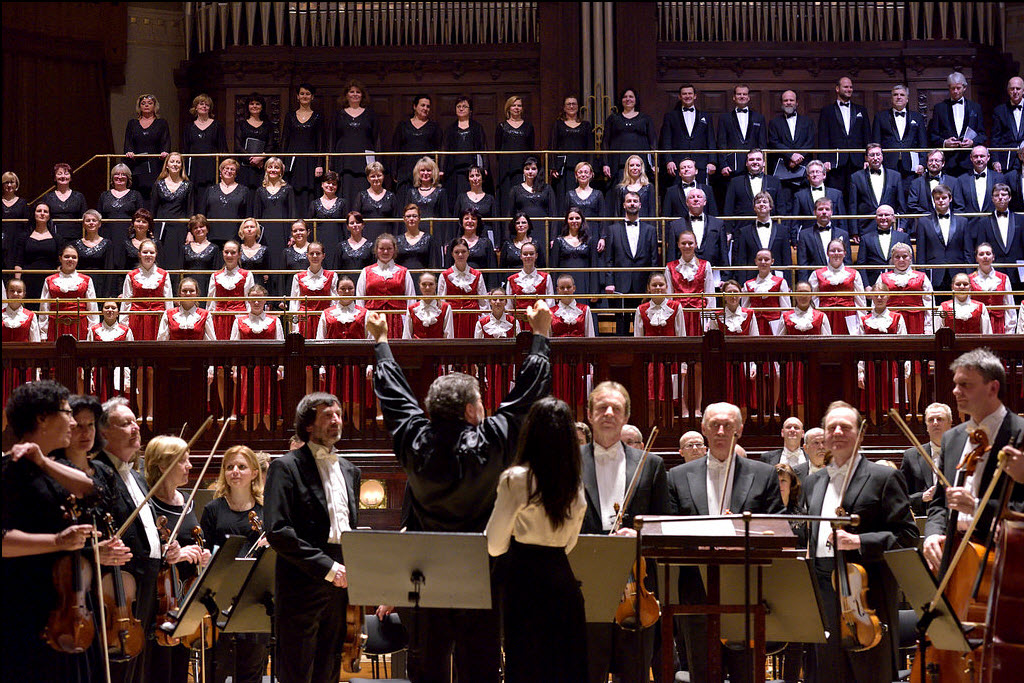







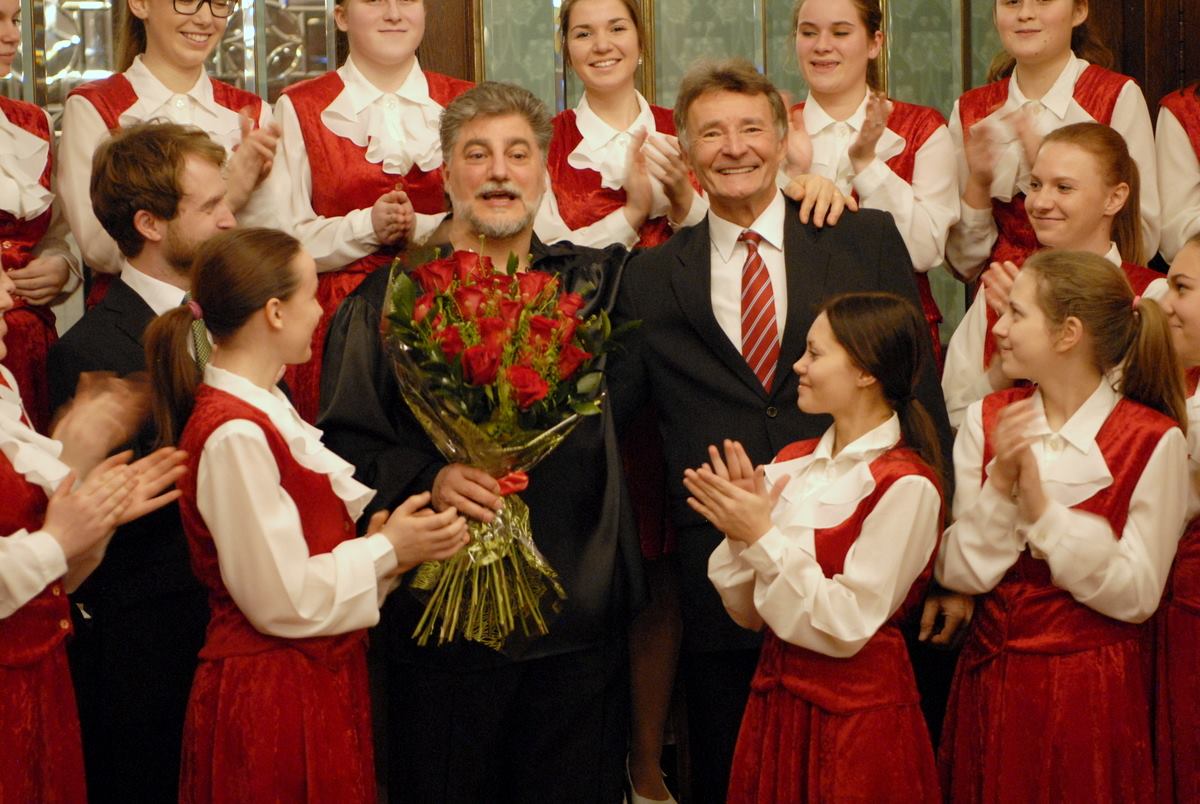
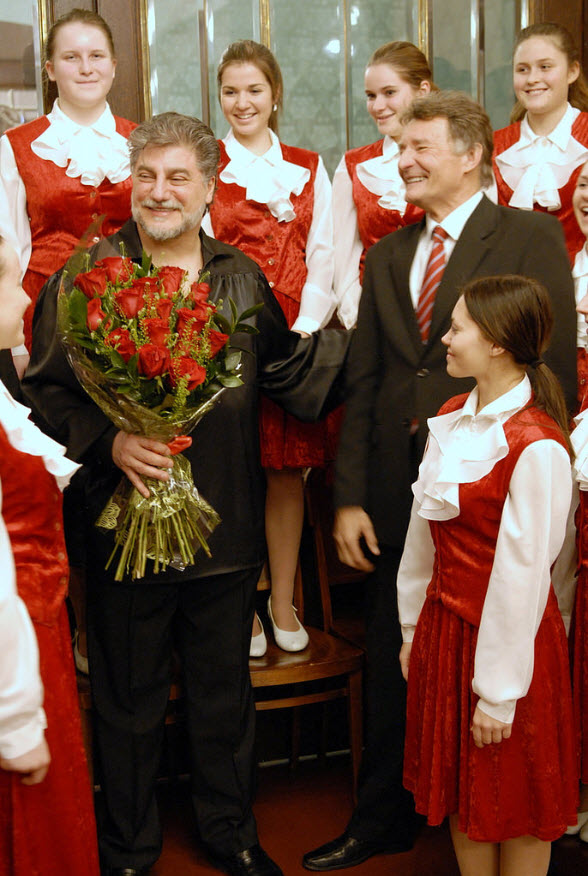

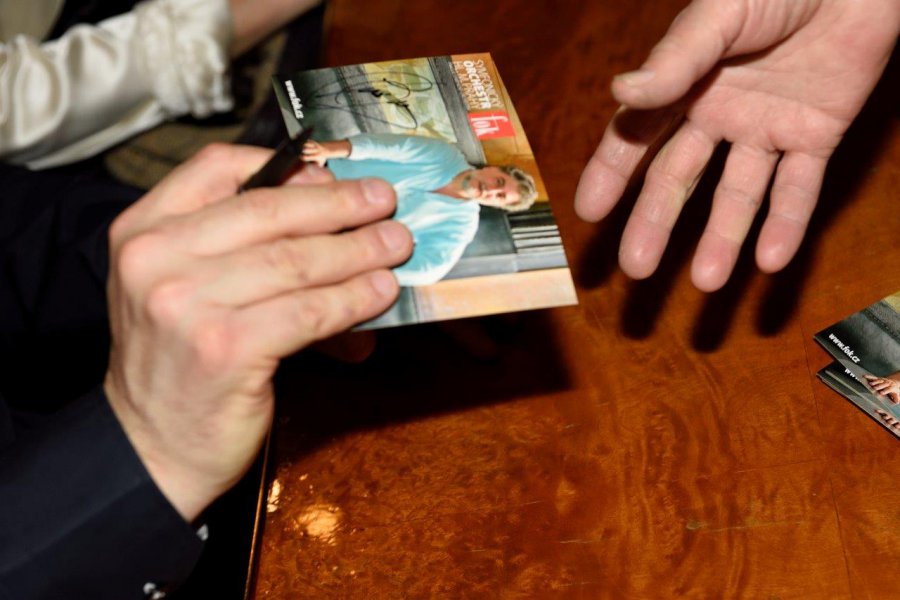

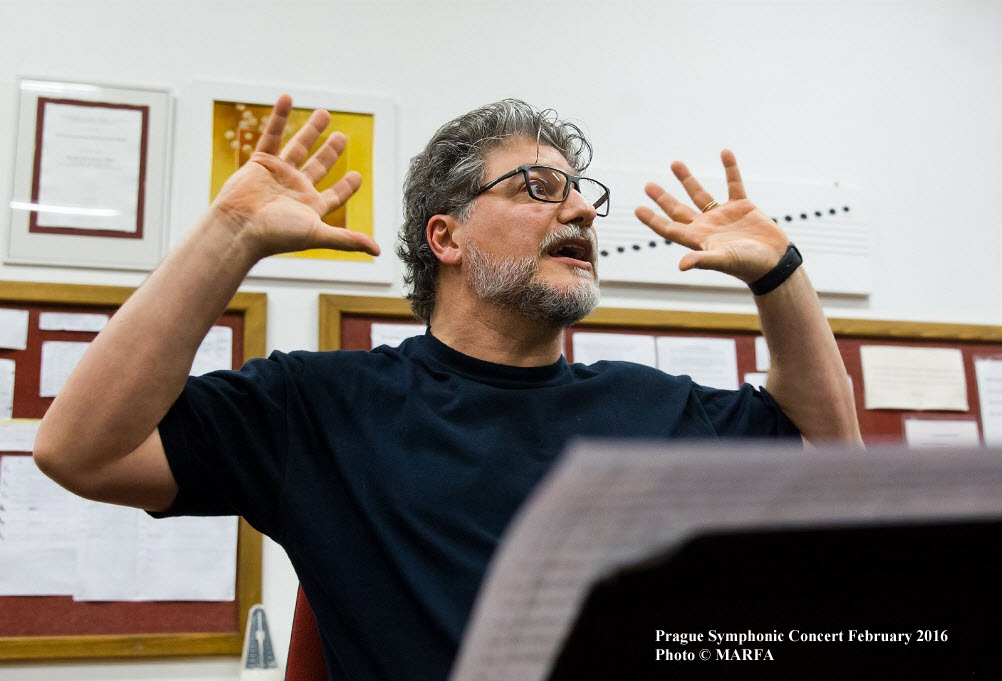





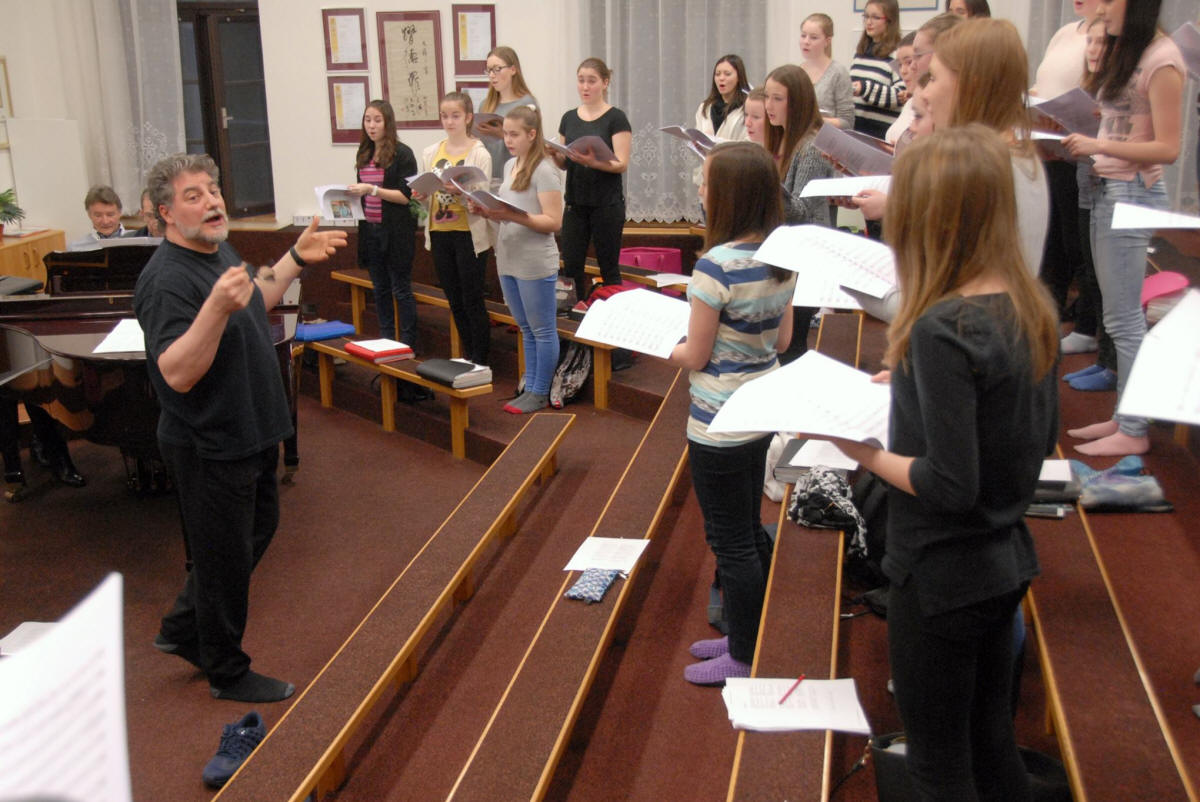

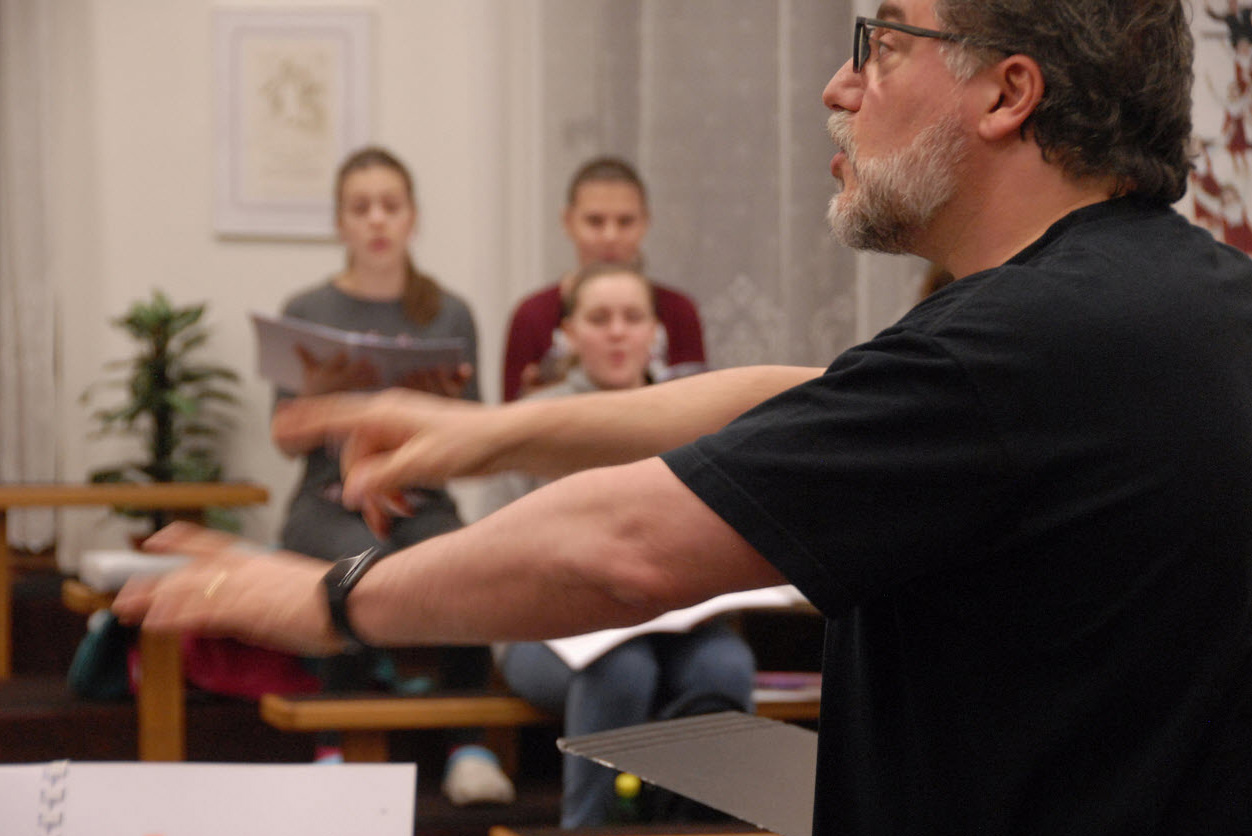



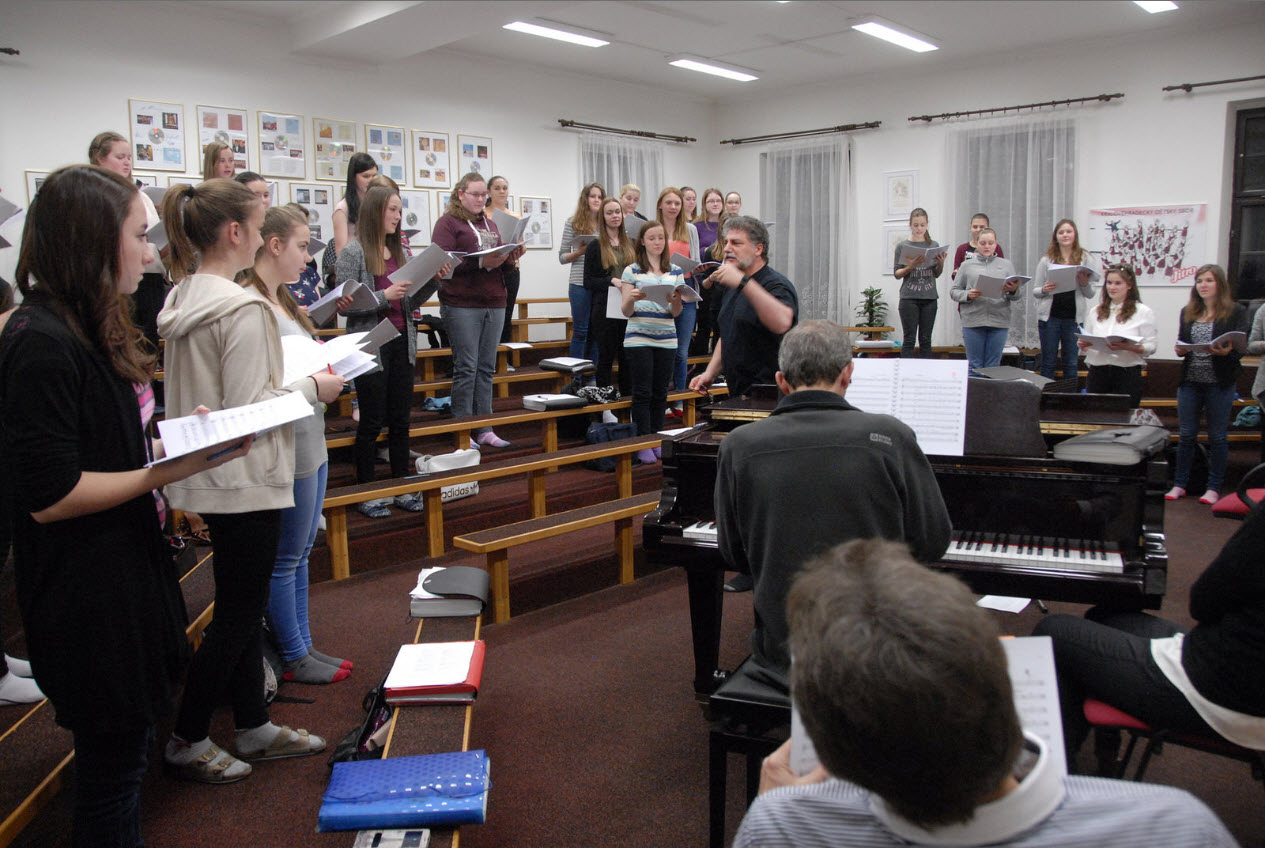
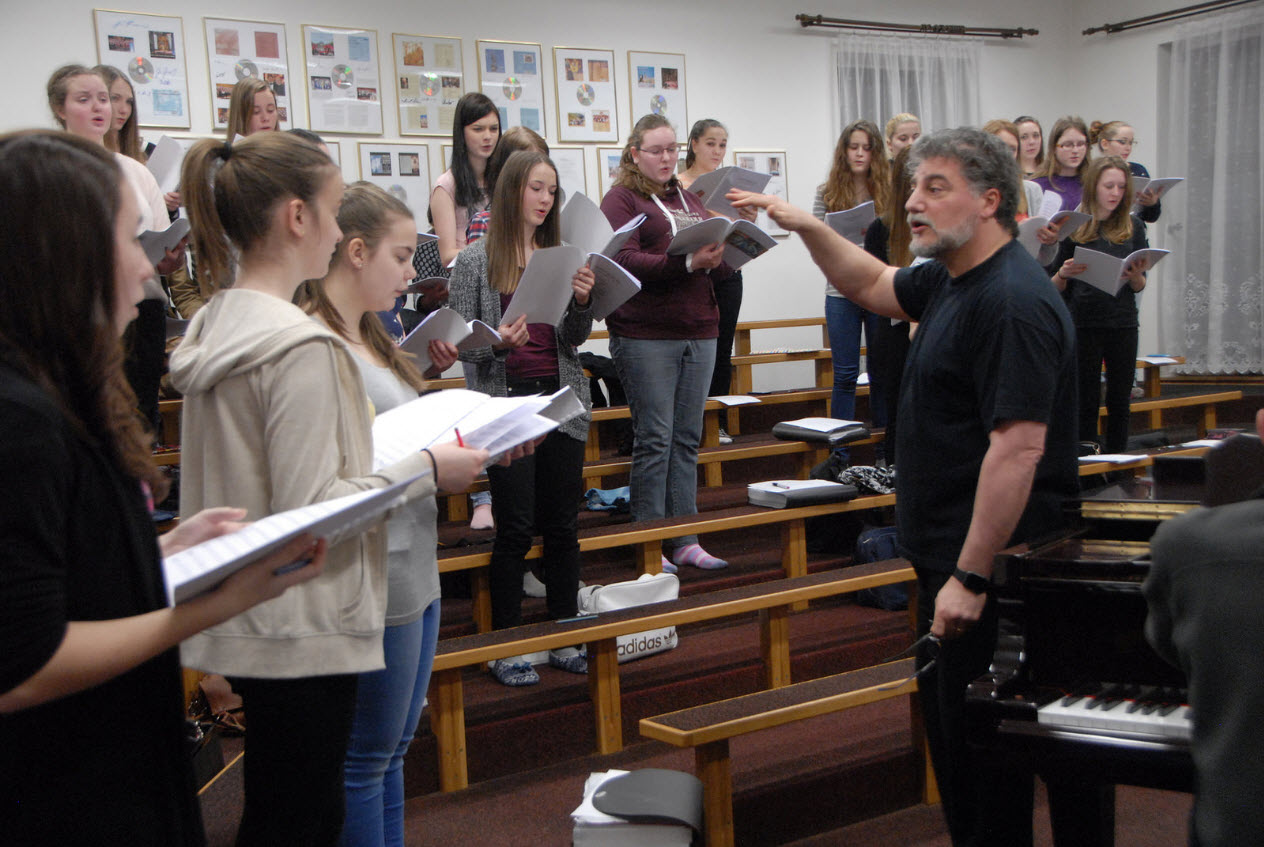
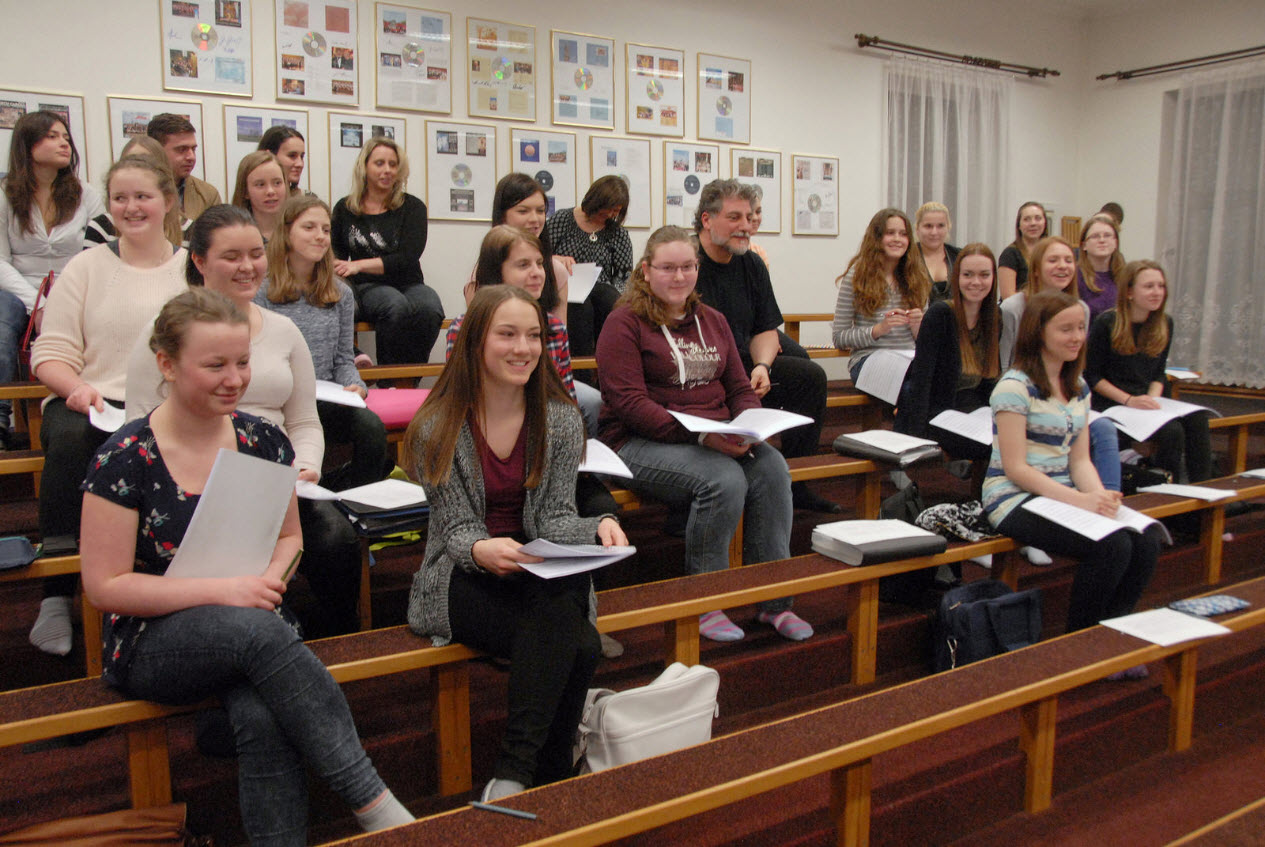
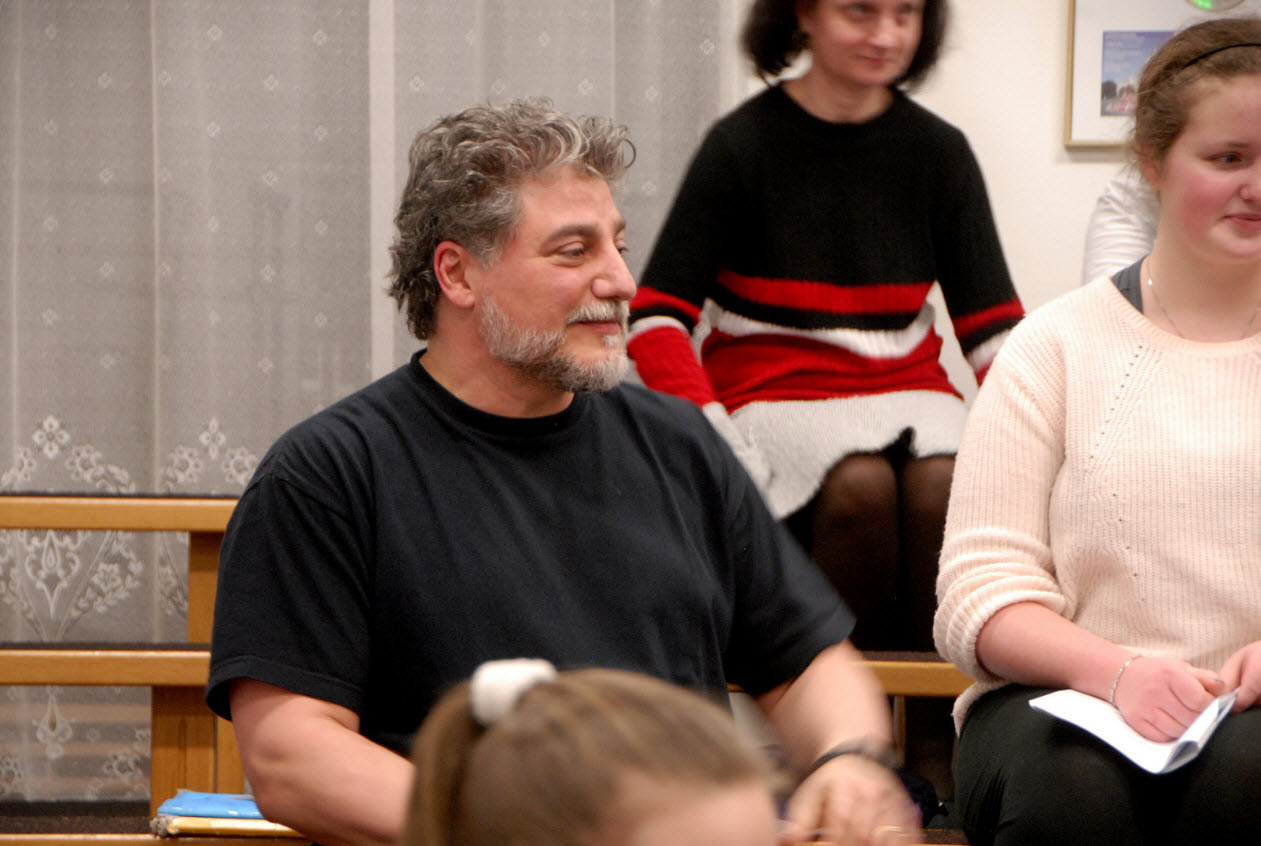
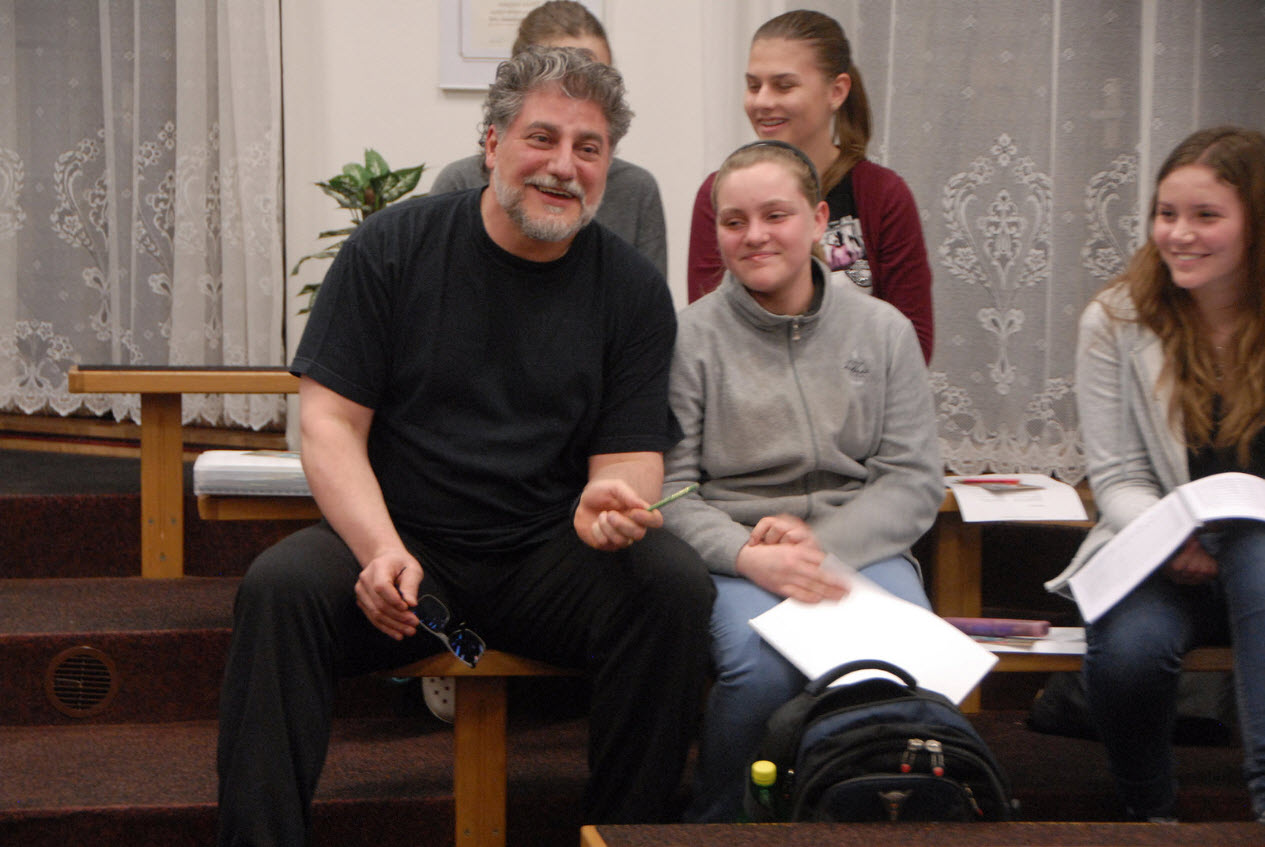





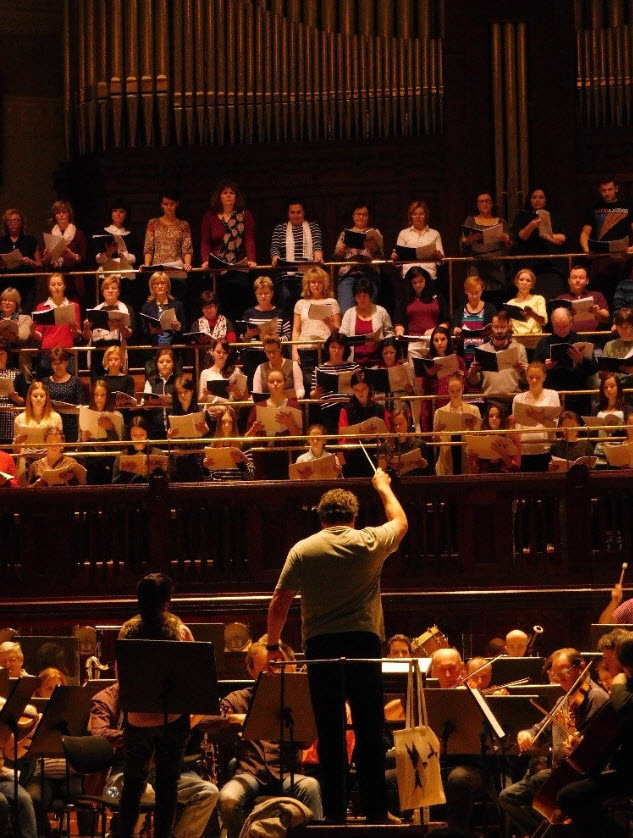

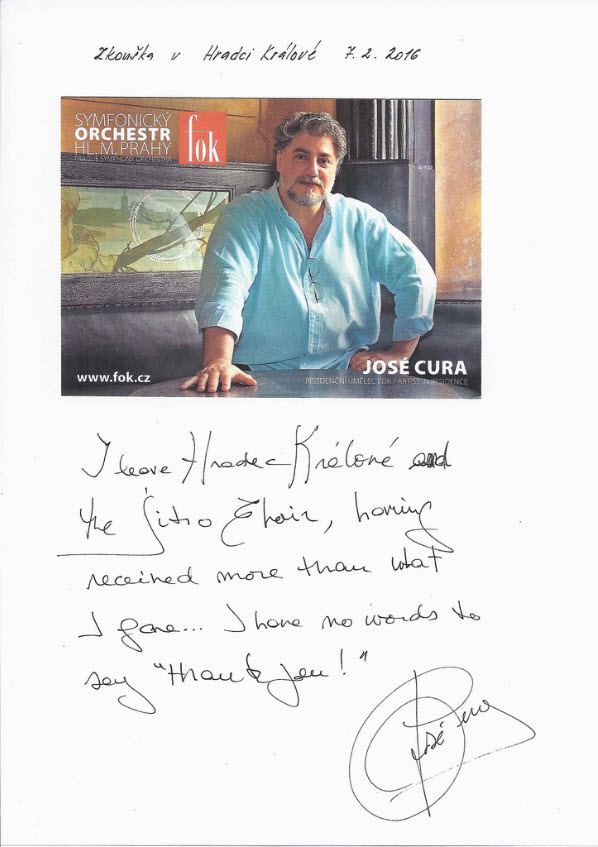



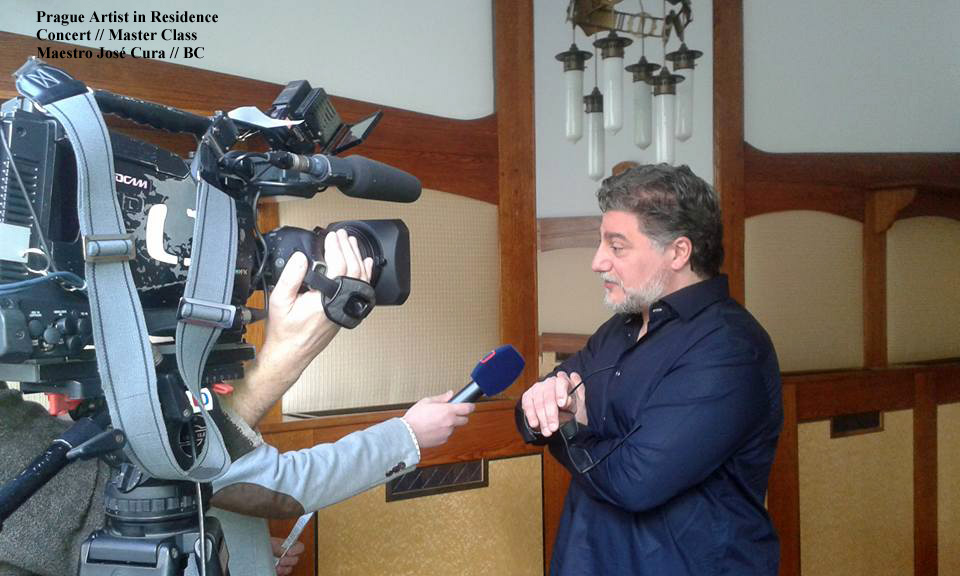






%20sm.jpg)

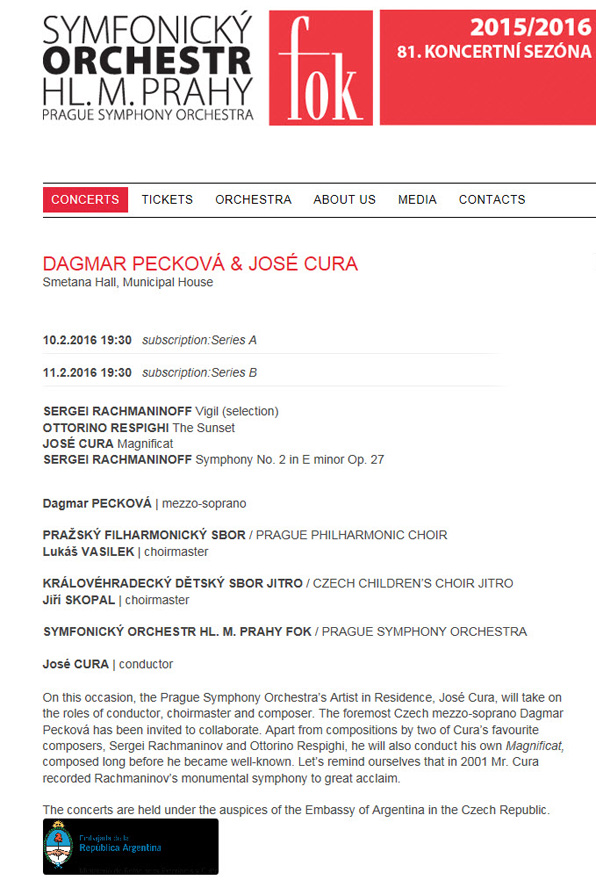






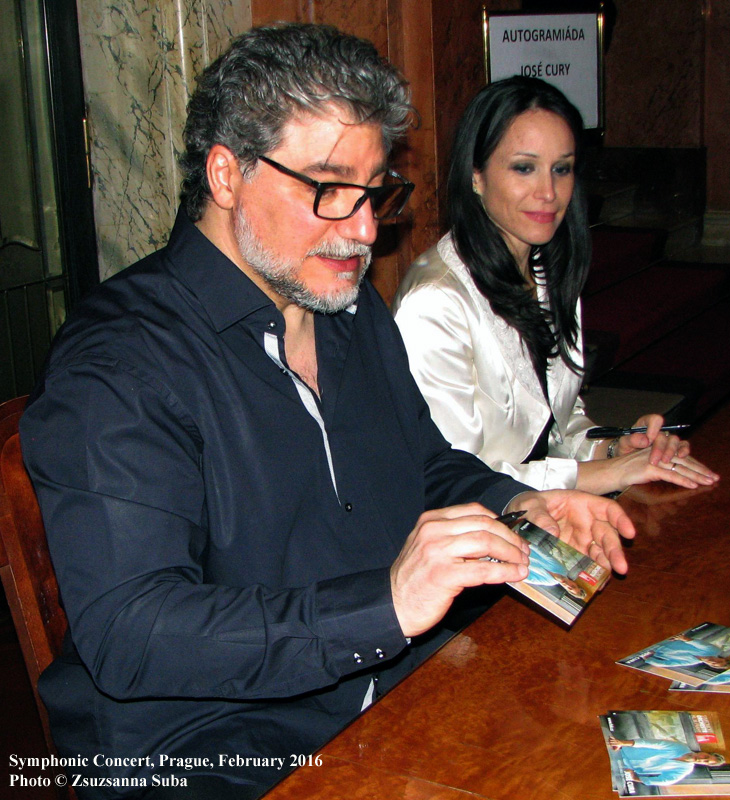





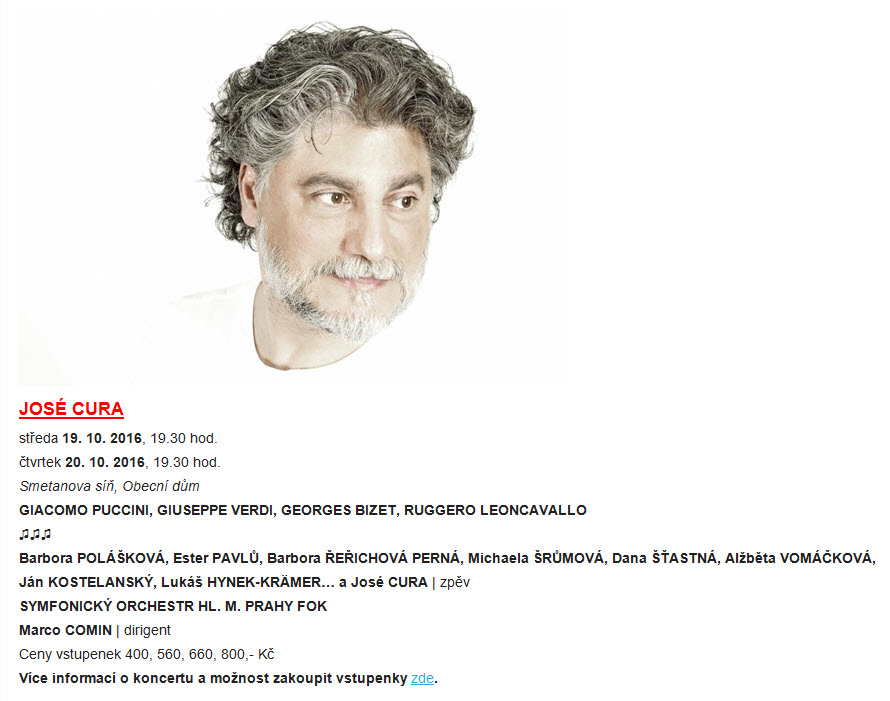


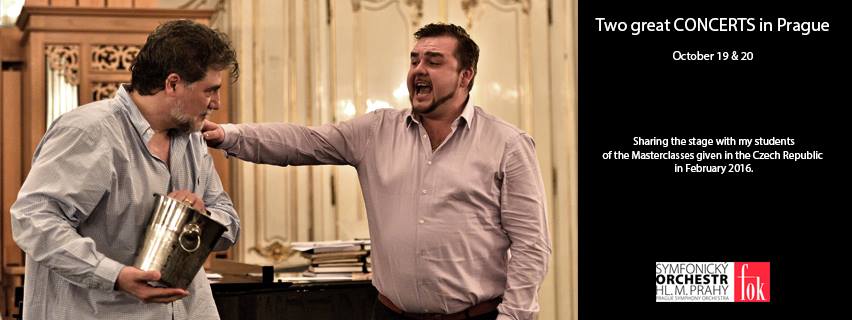
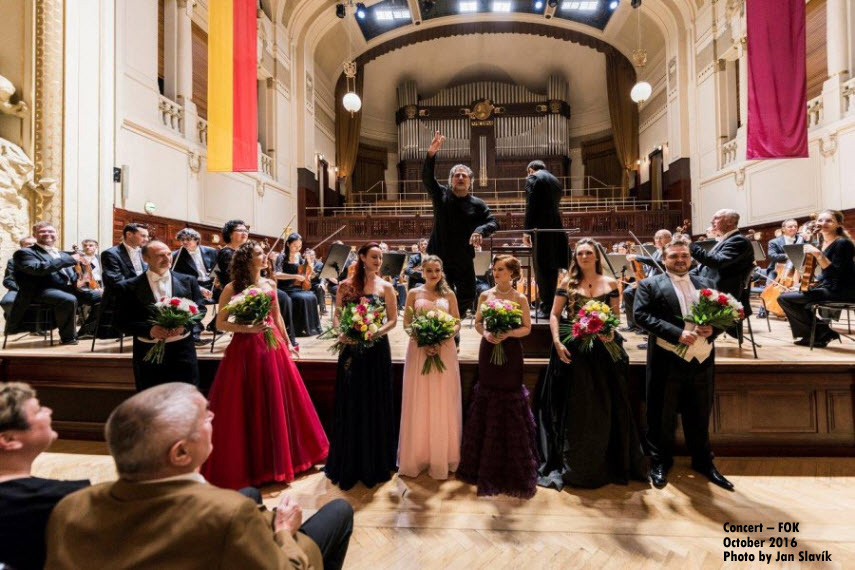


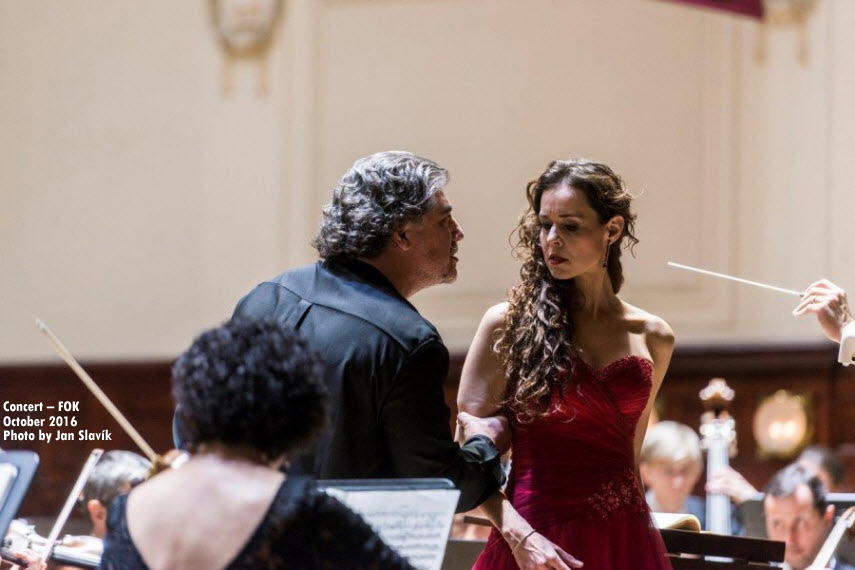


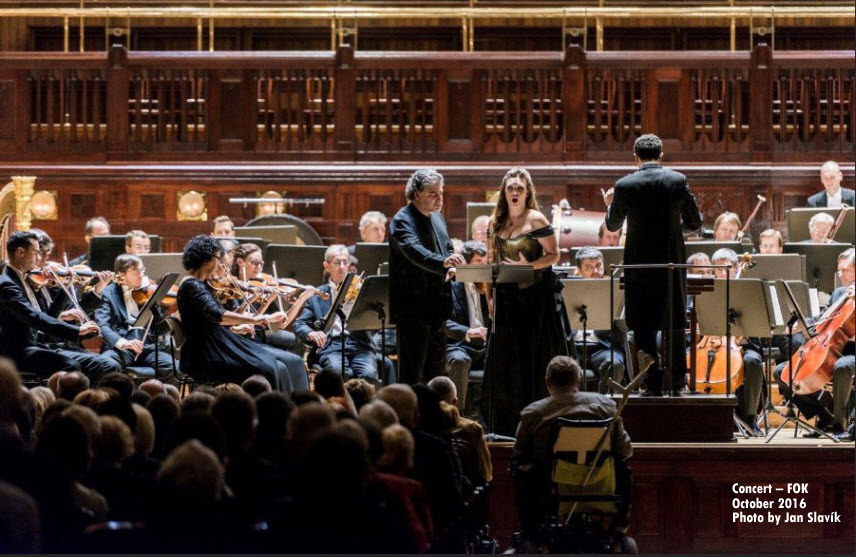
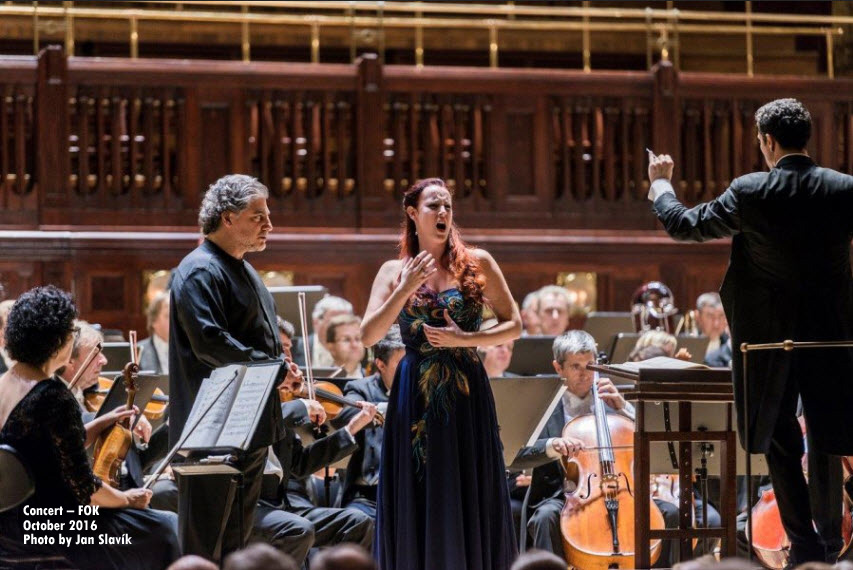





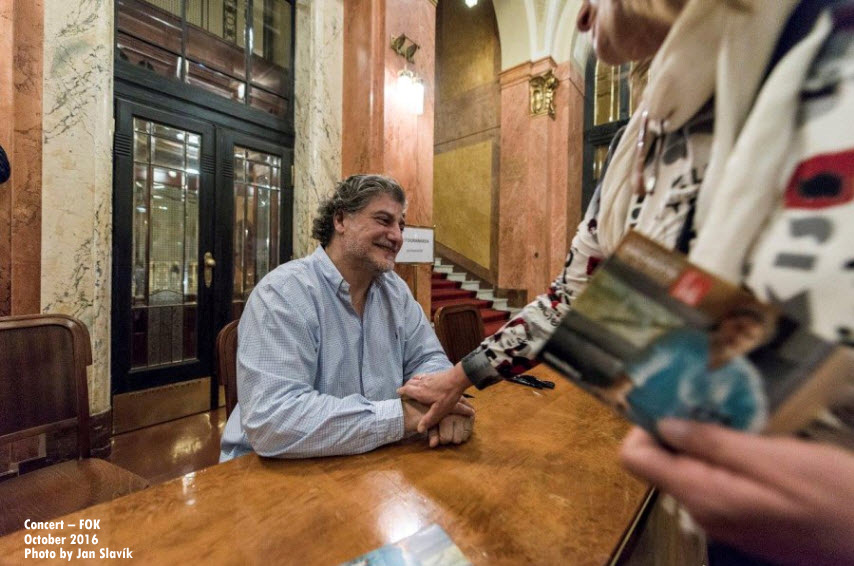


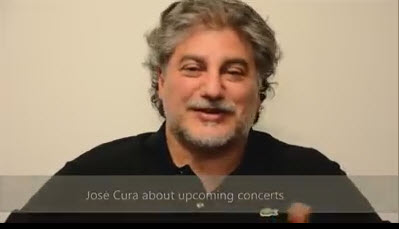


.jpg)
.jpg)
.jpg)

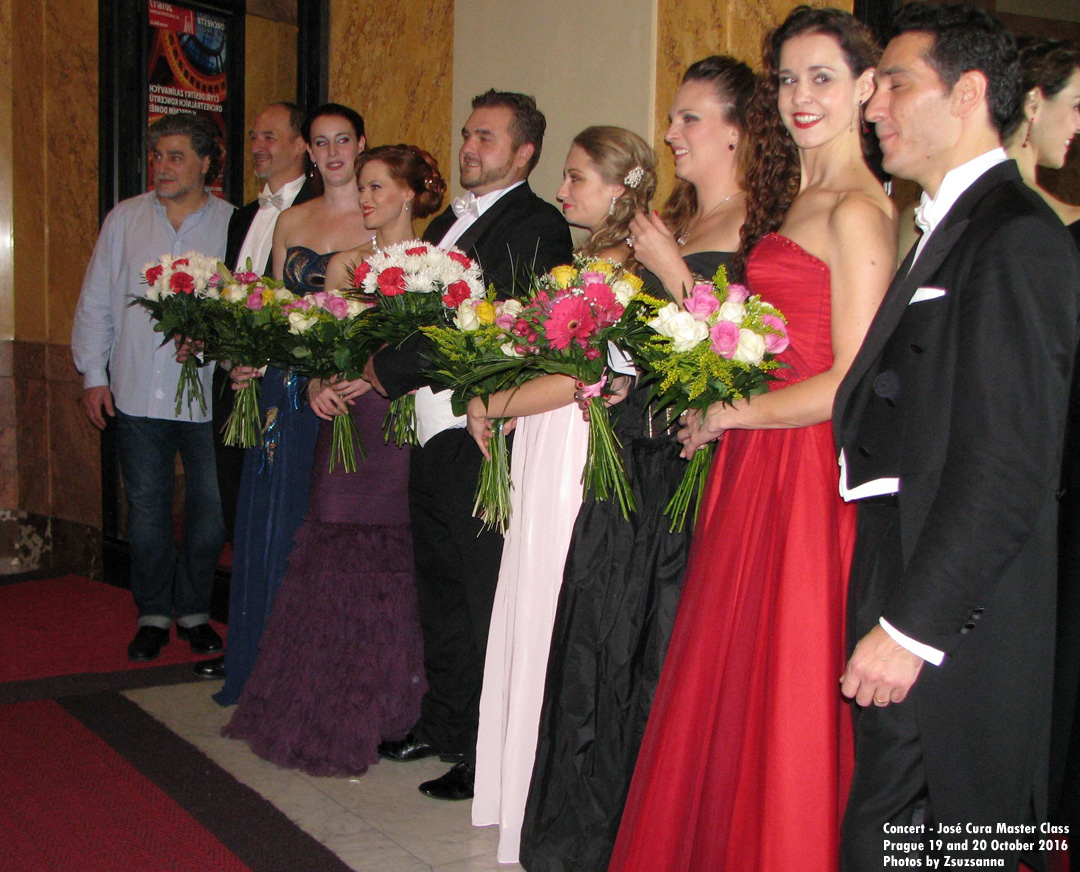




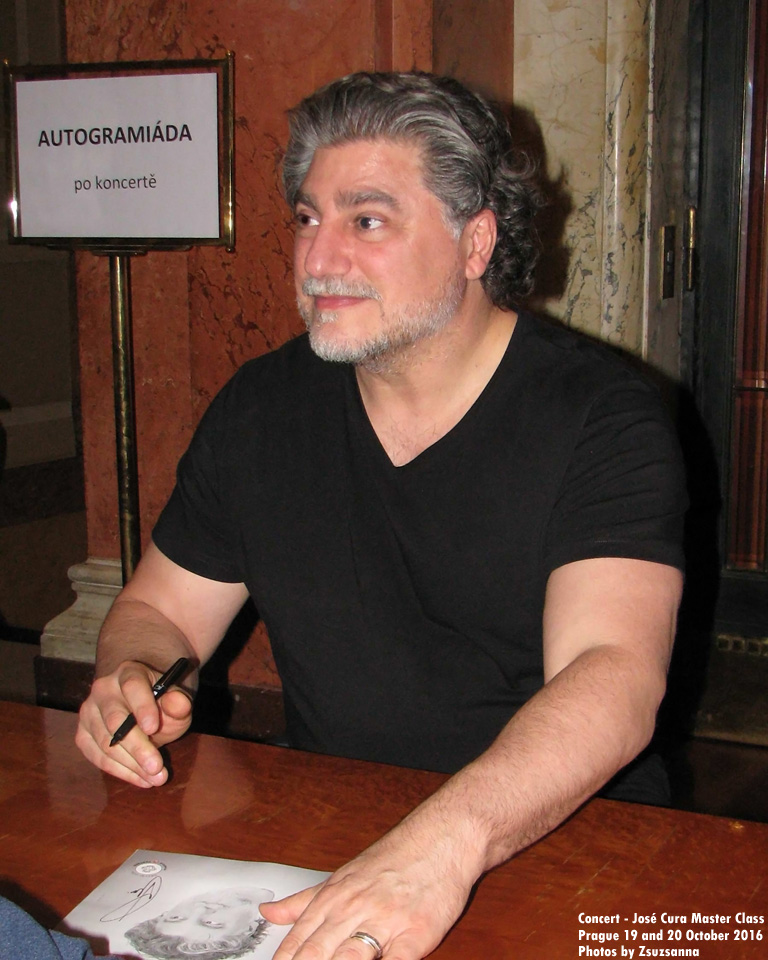
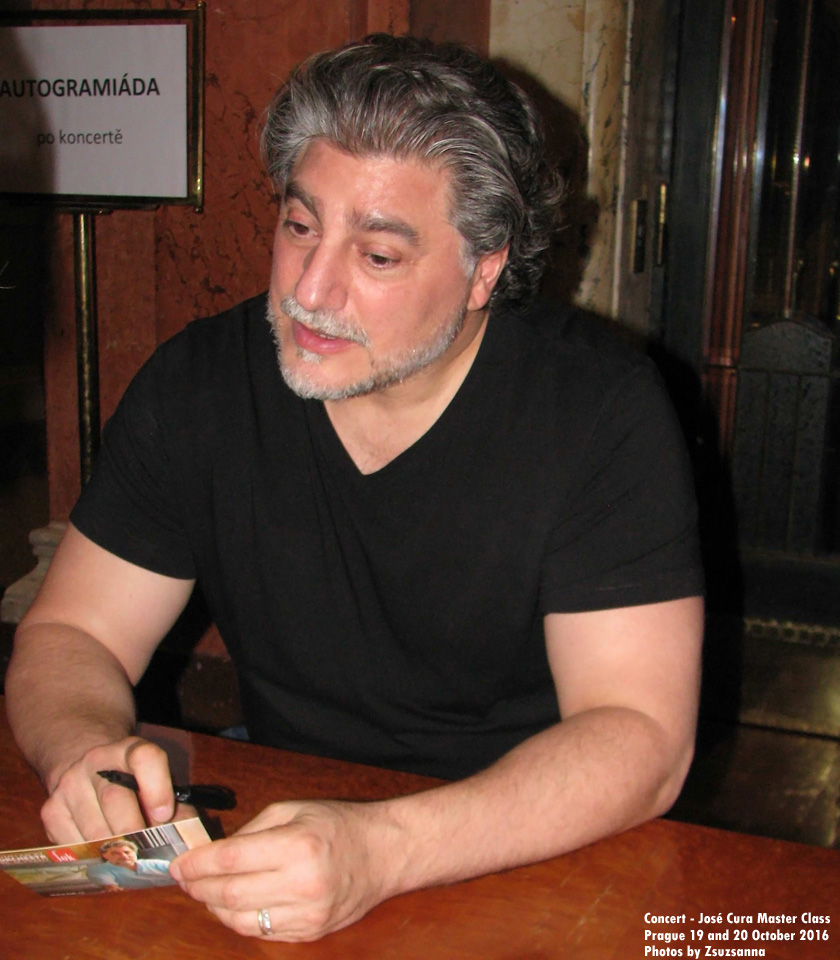
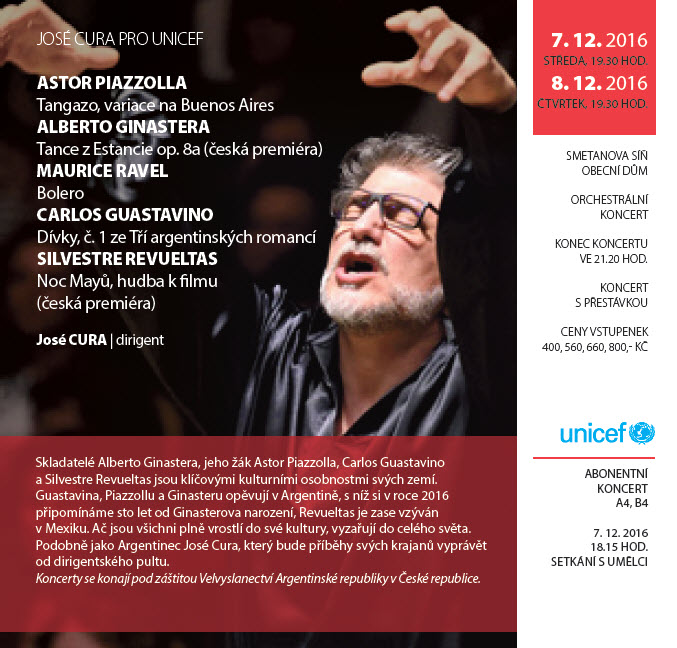

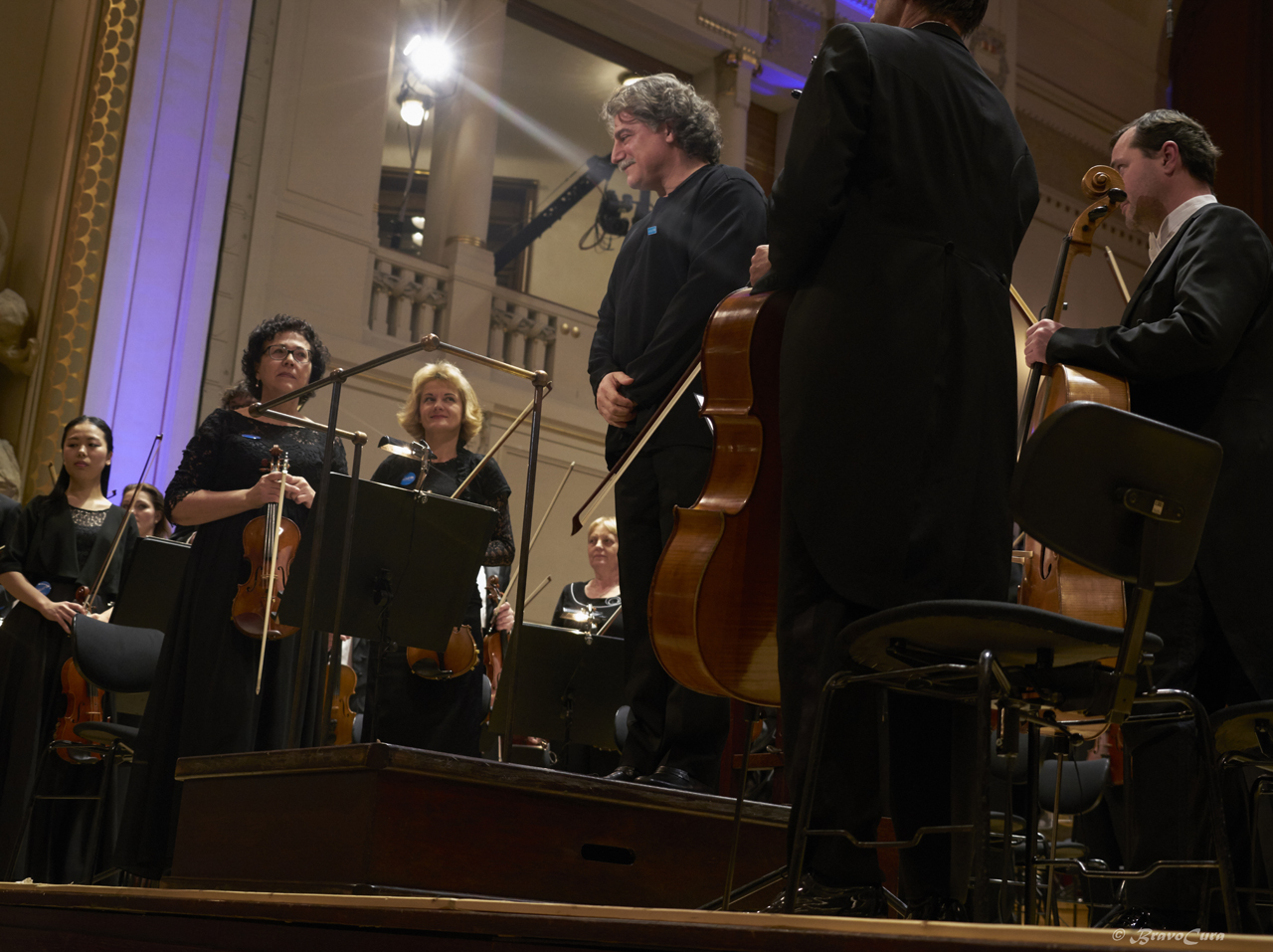
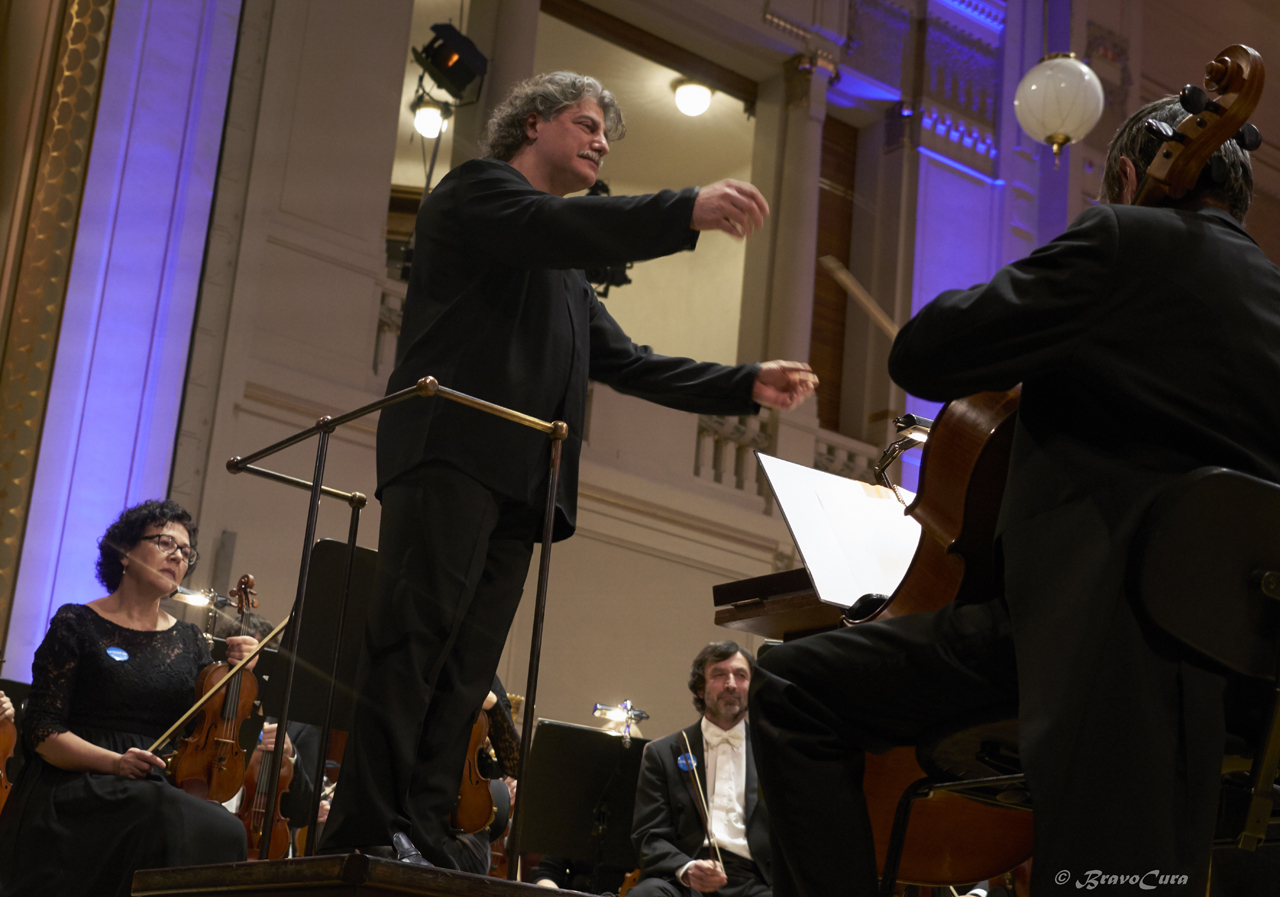

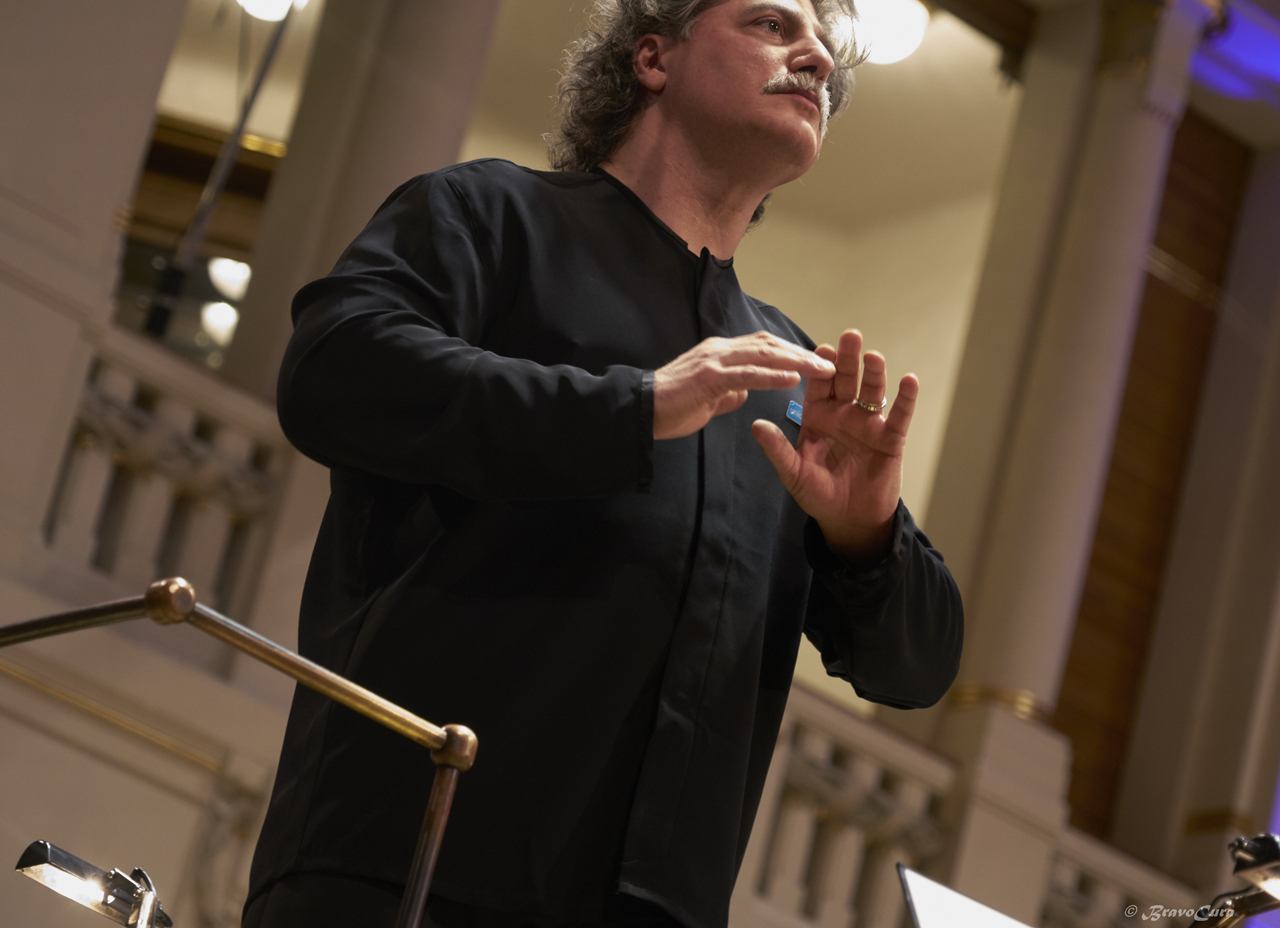

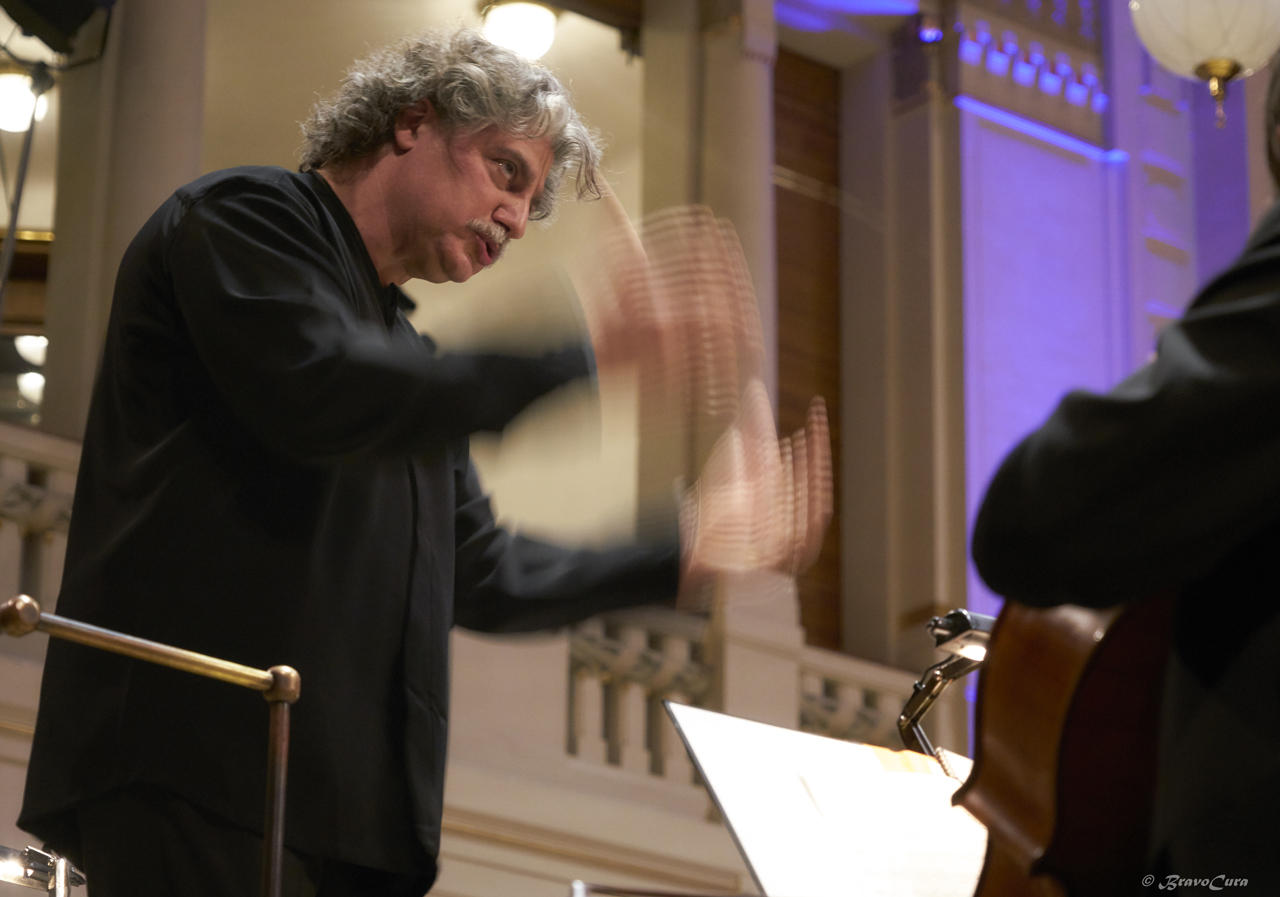

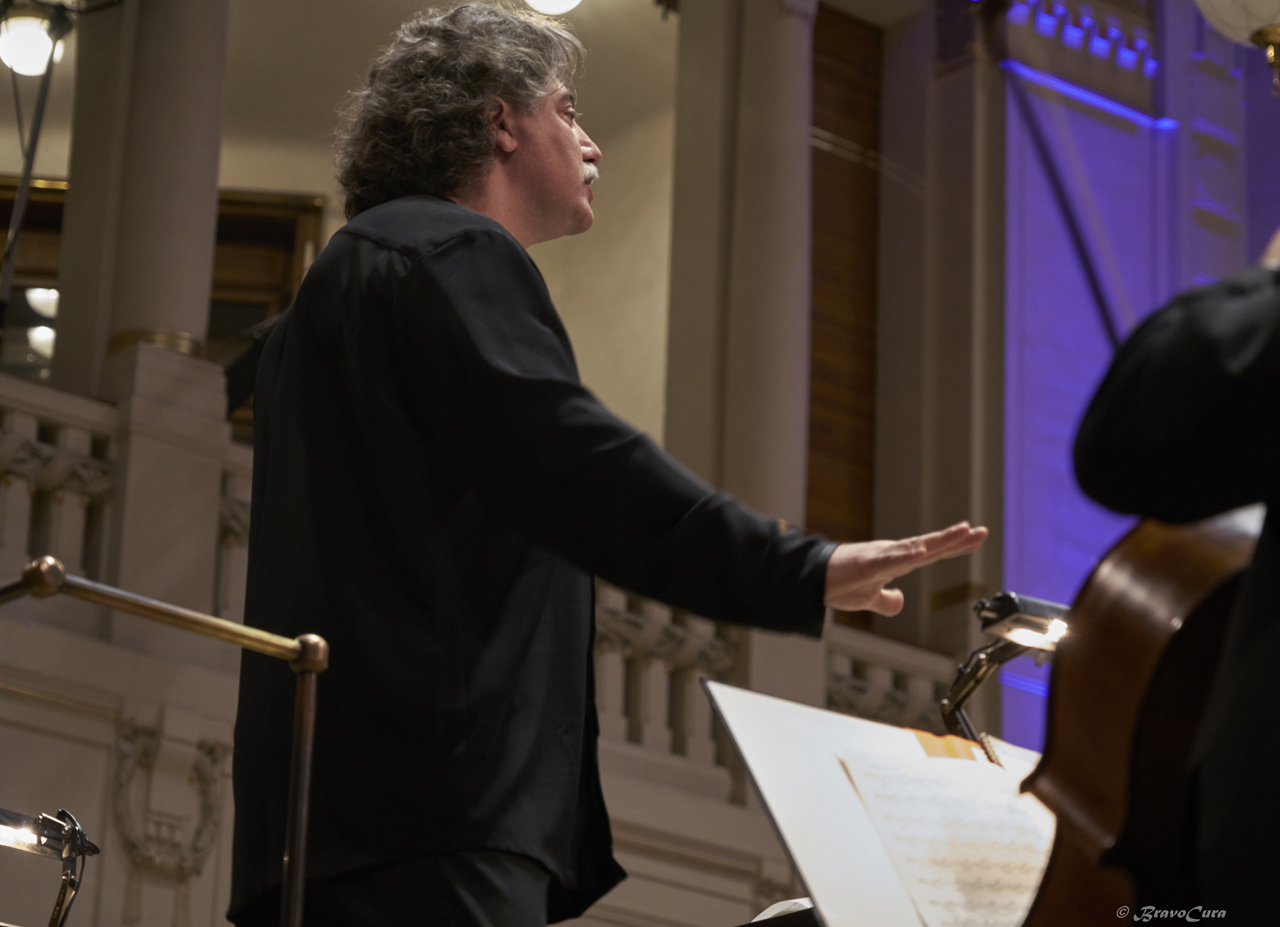

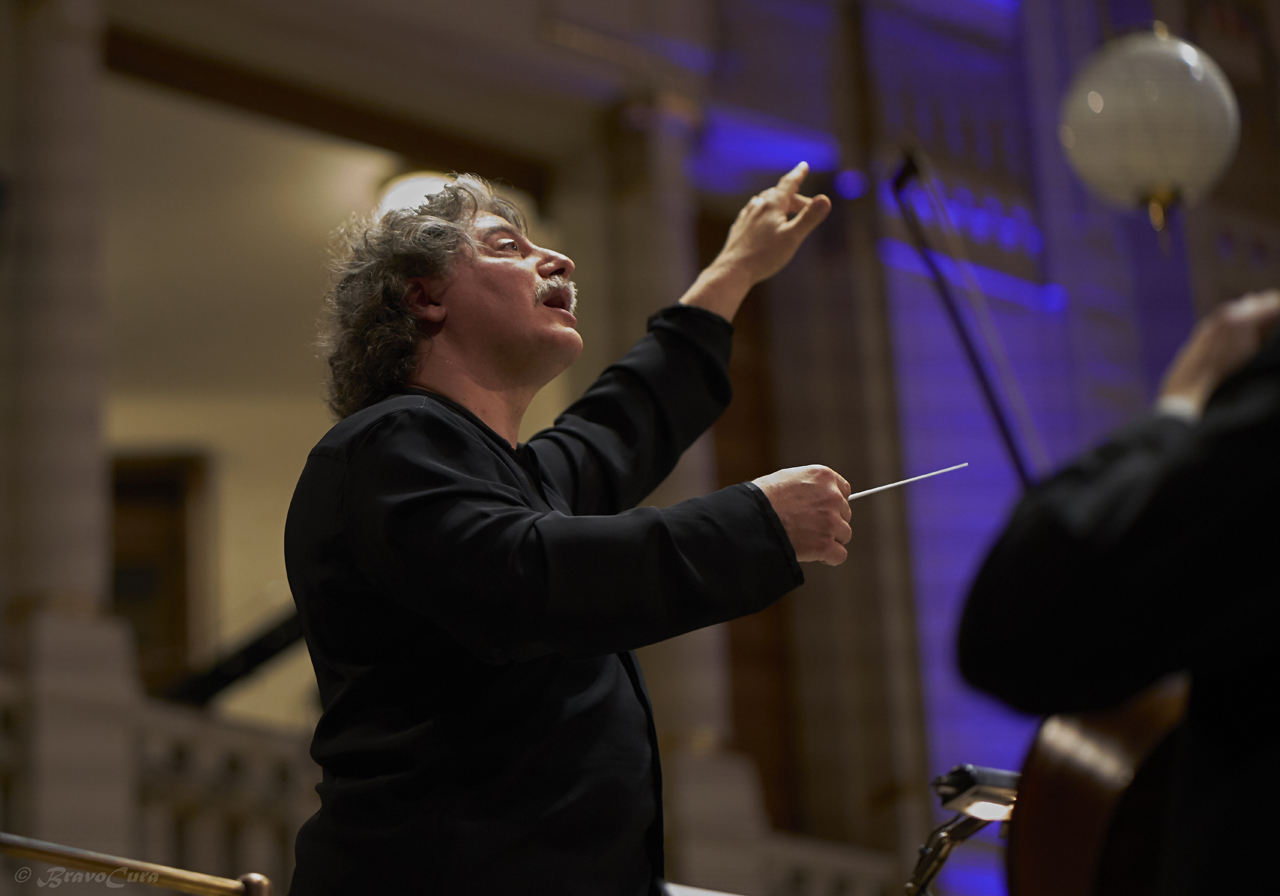


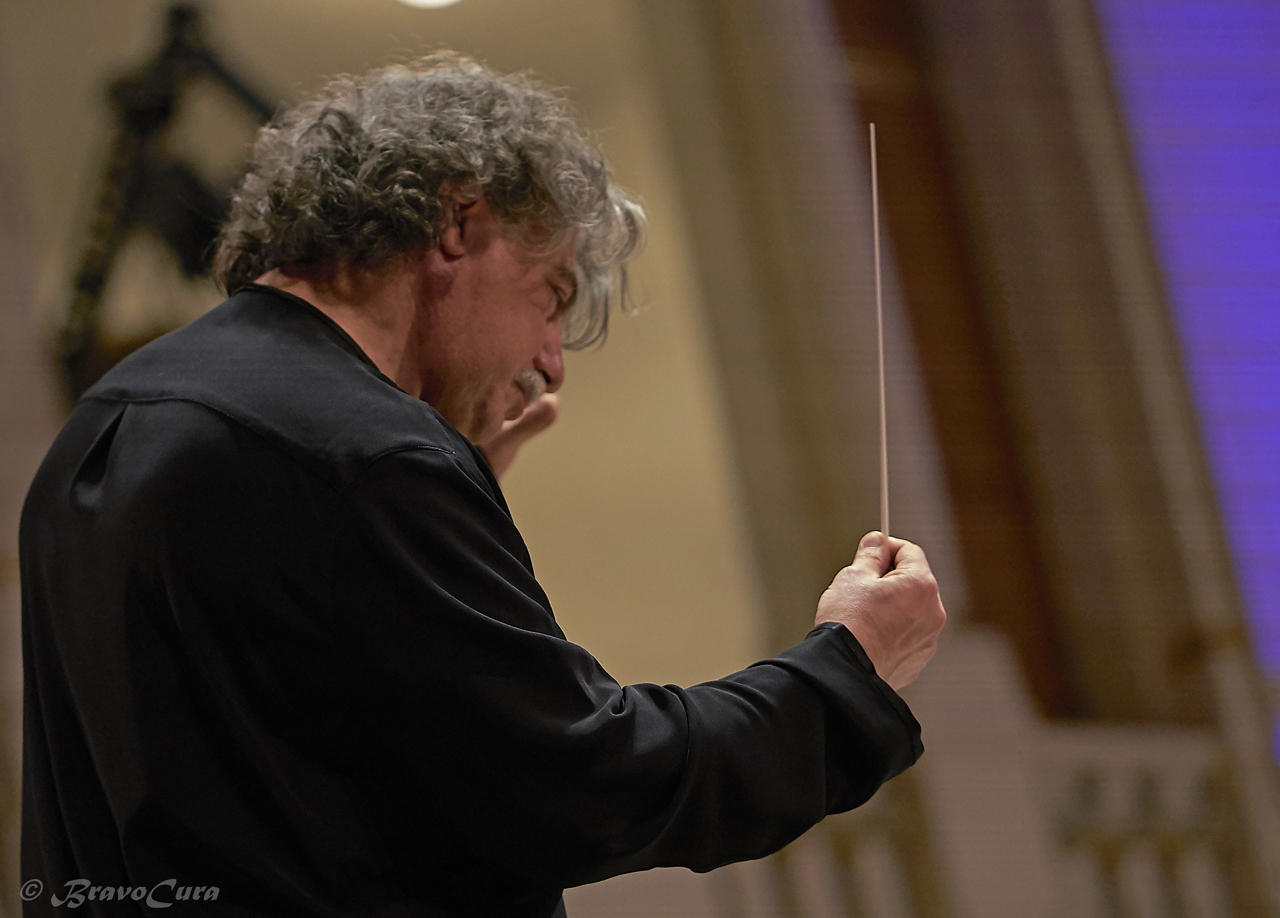




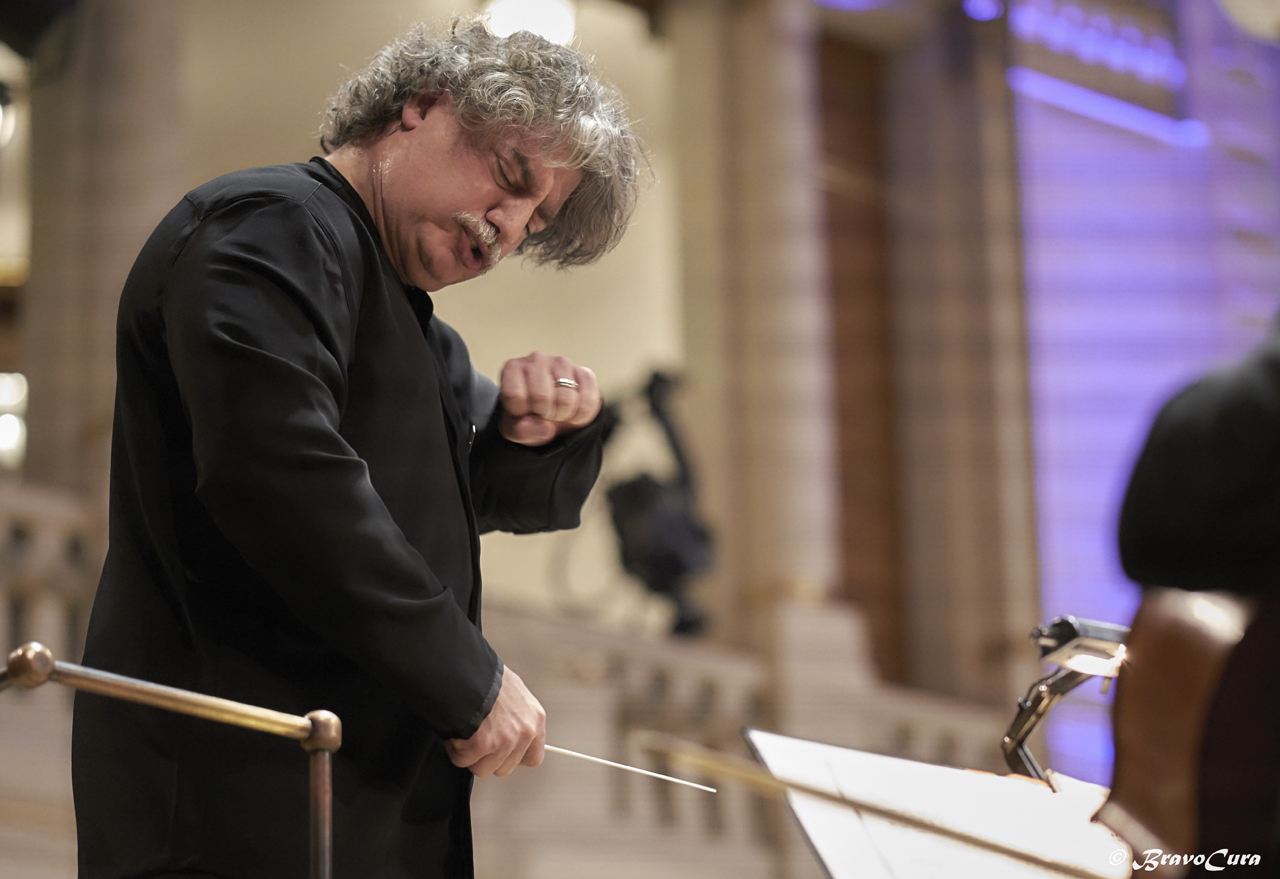
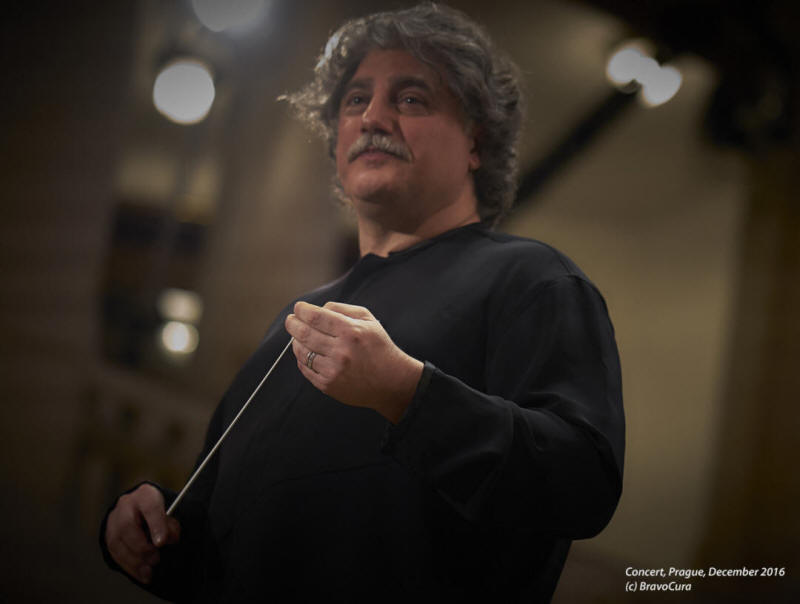

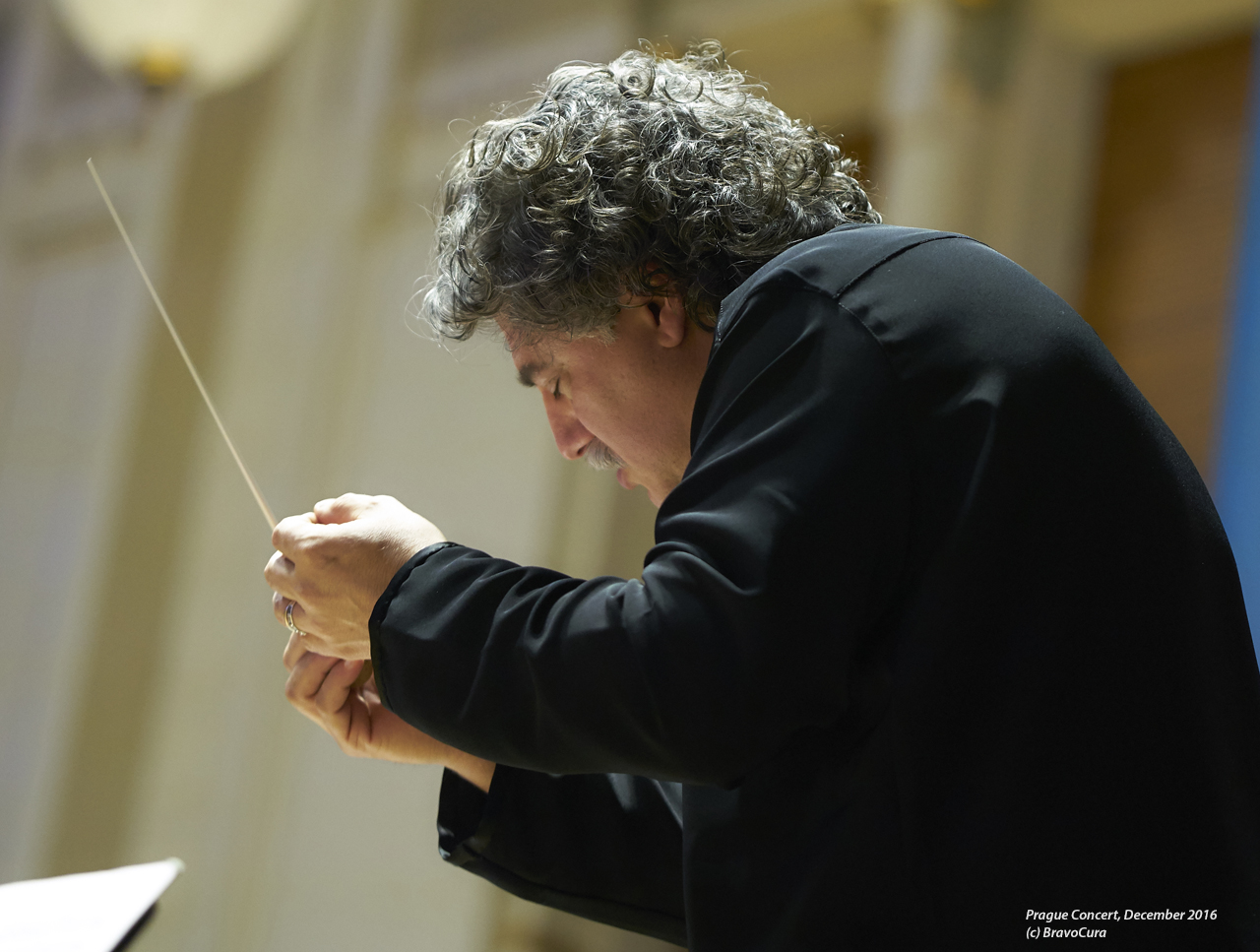
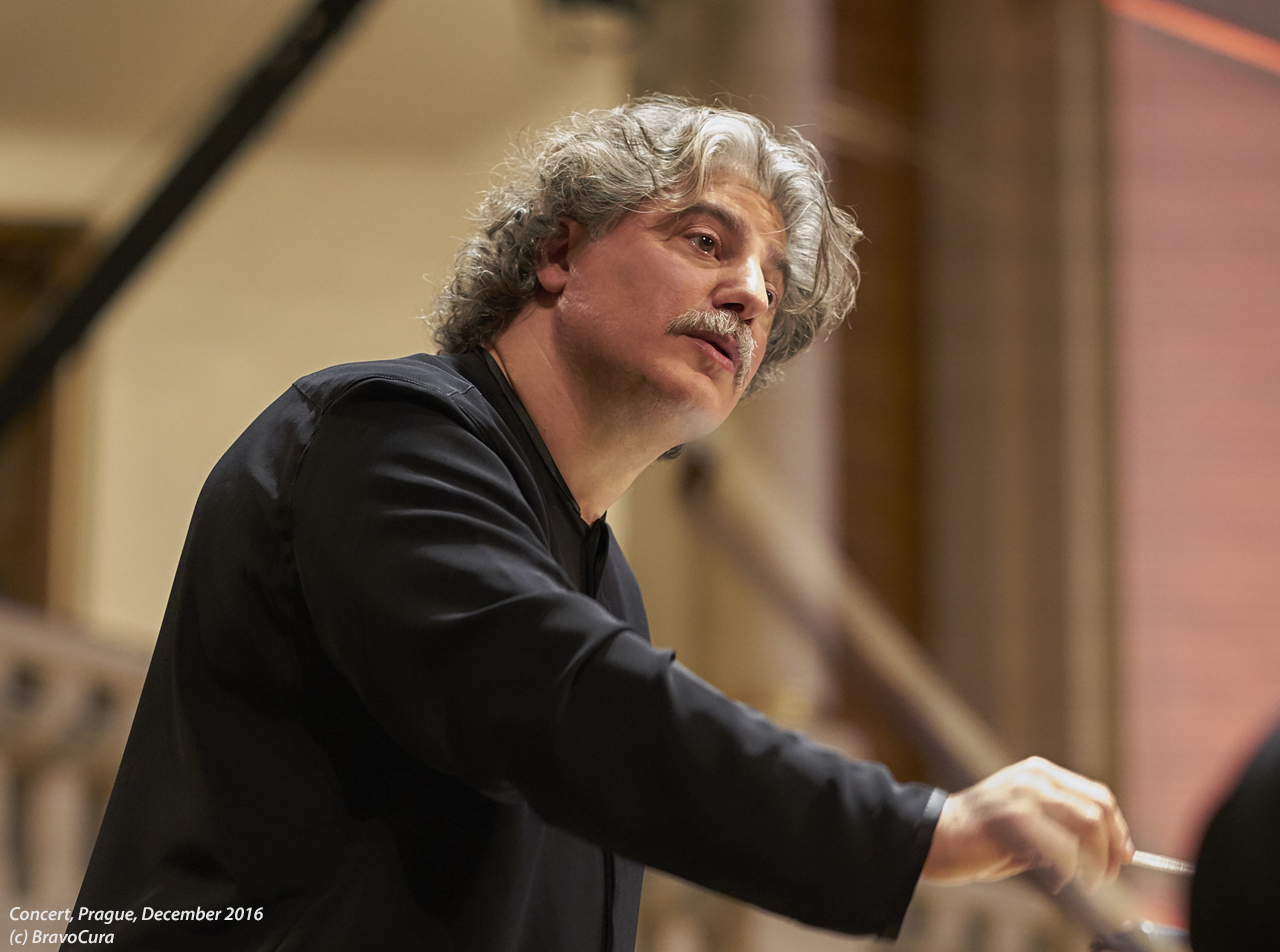



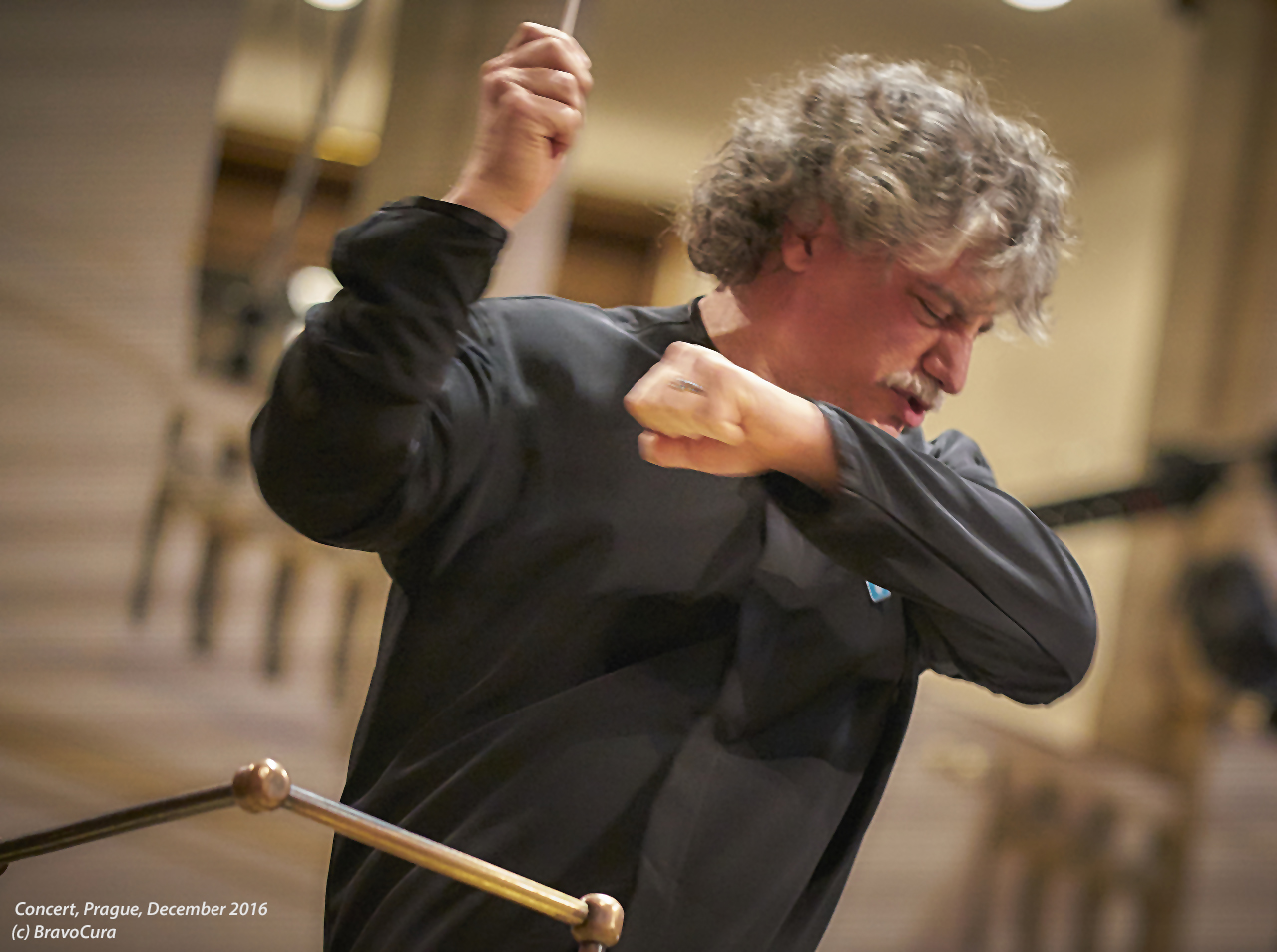

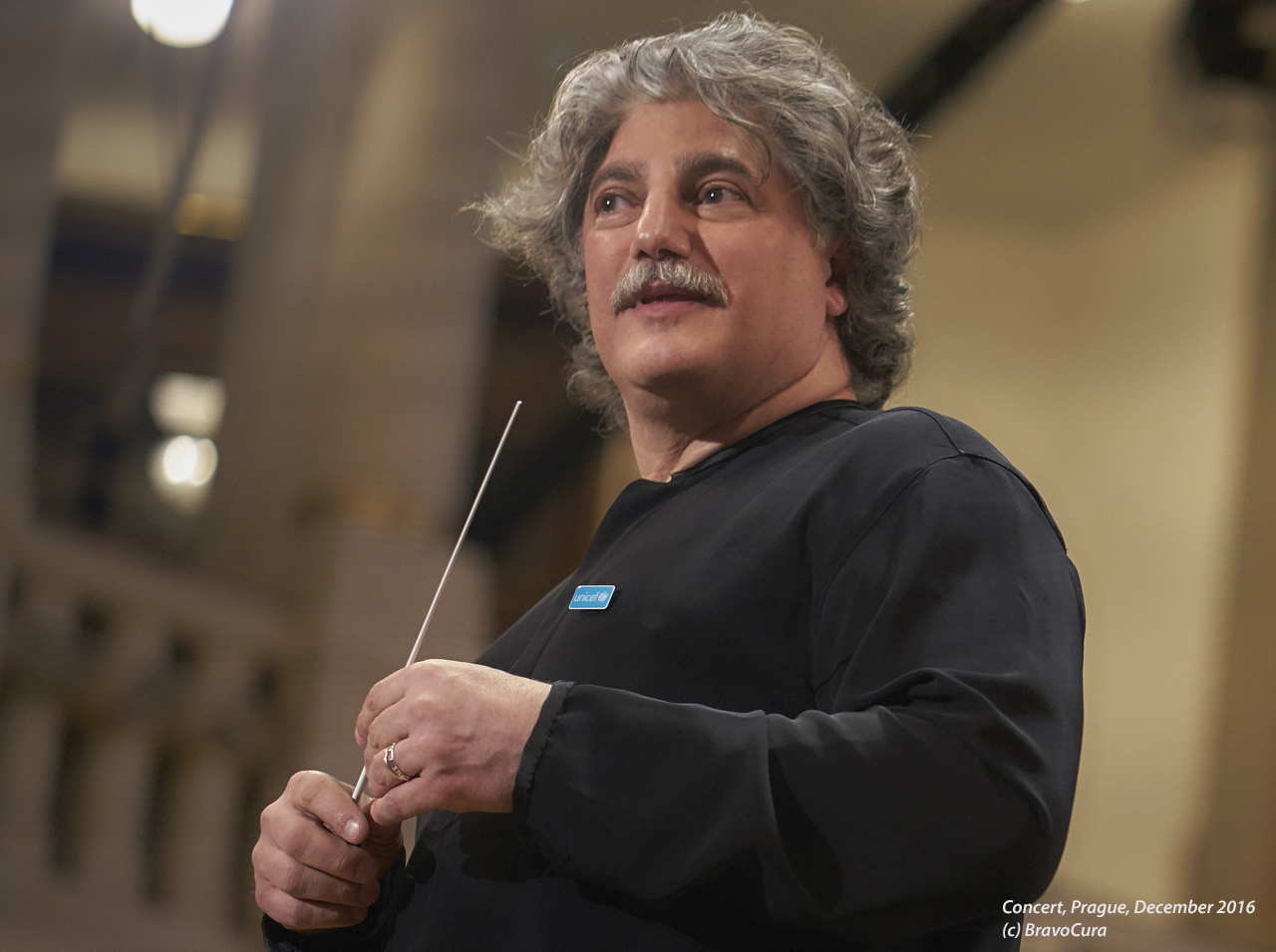
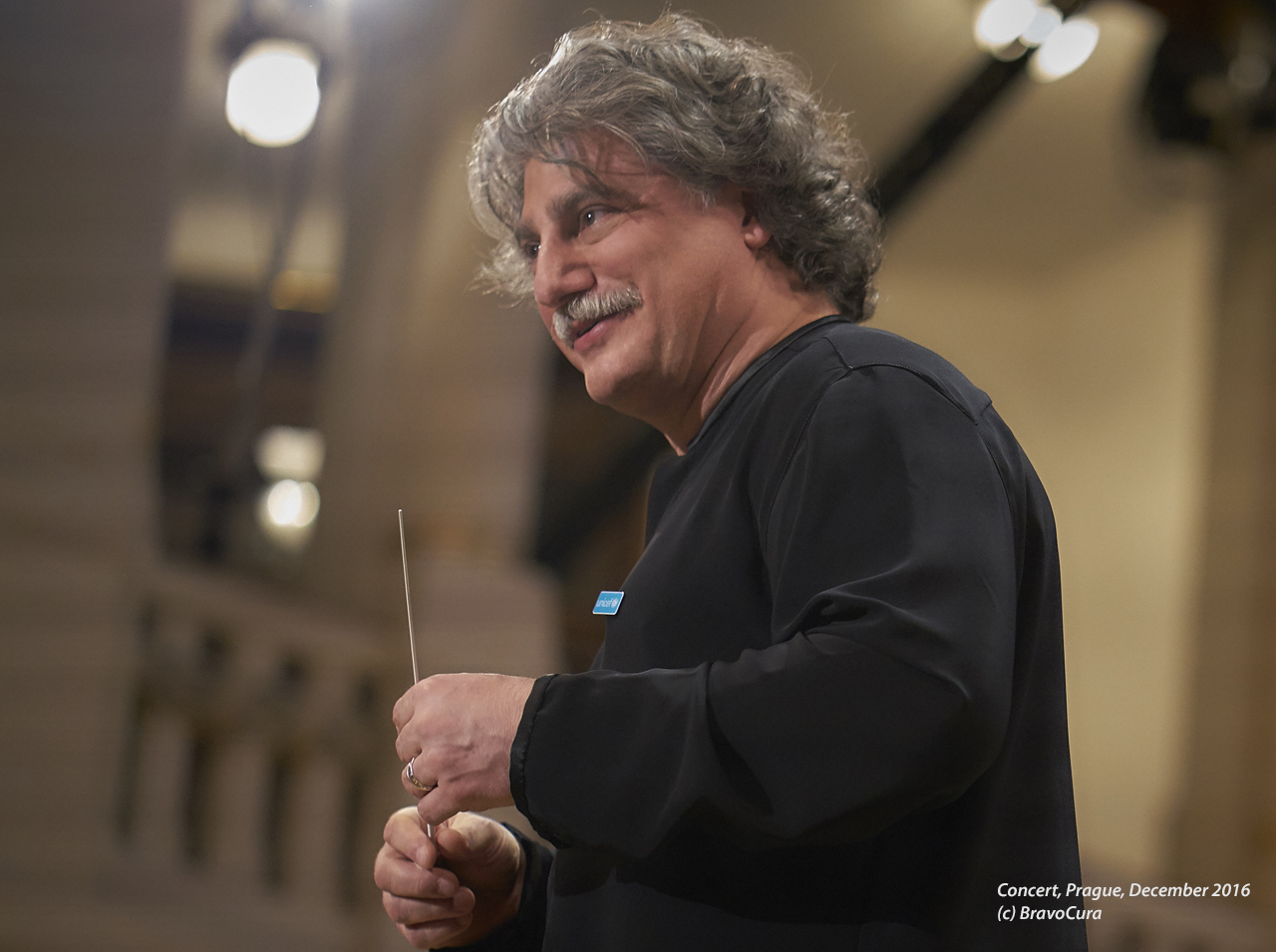


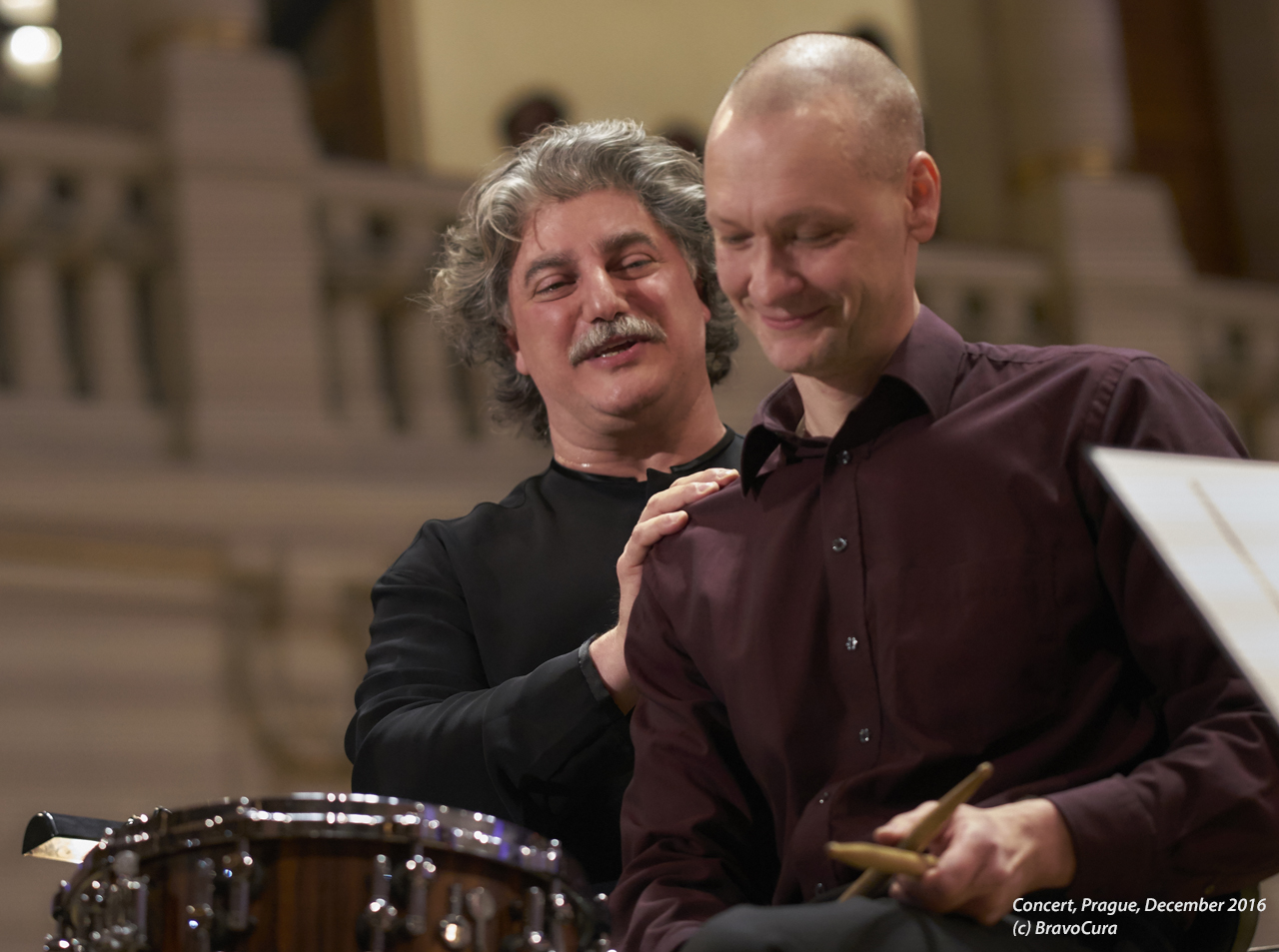


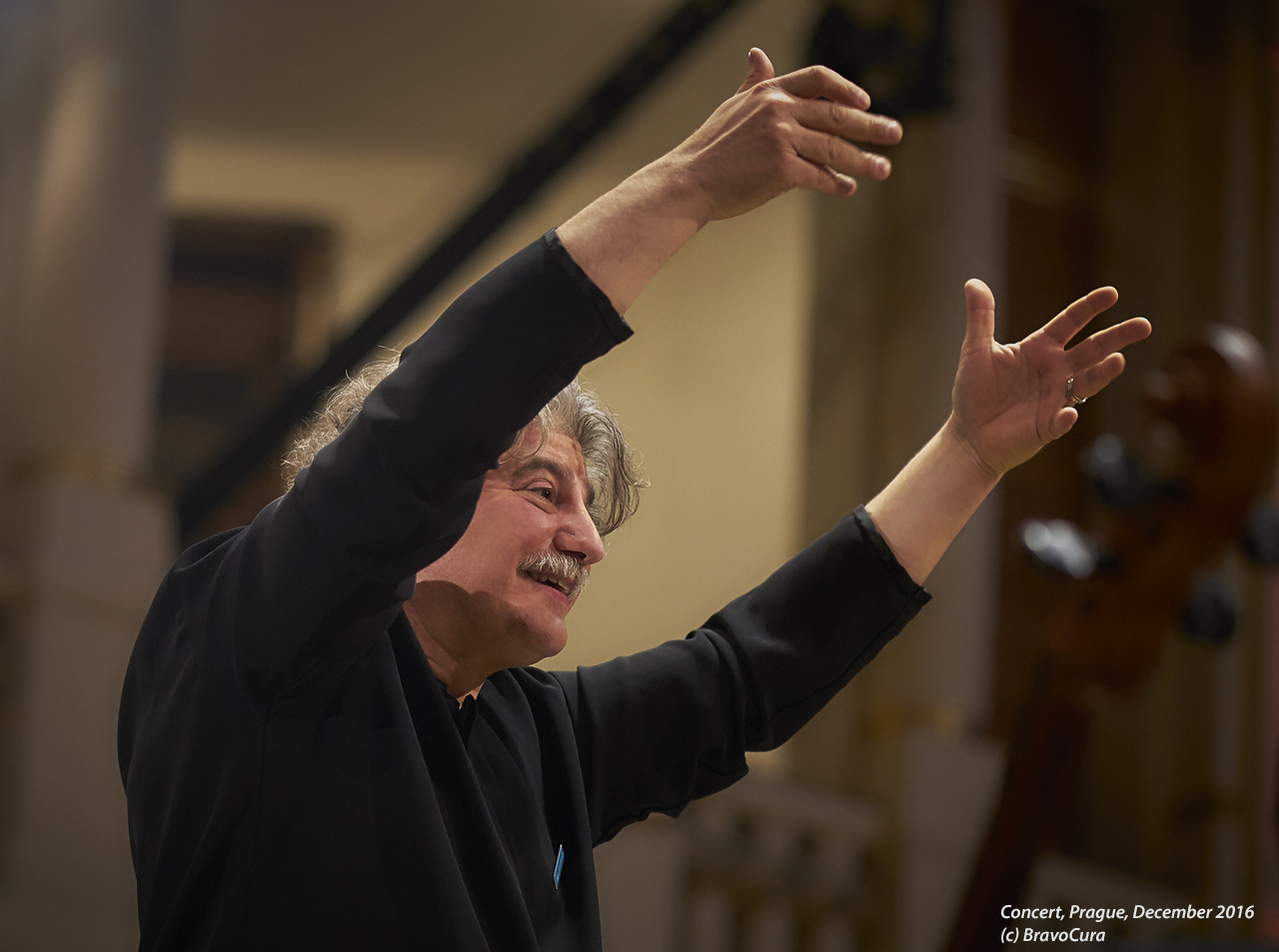


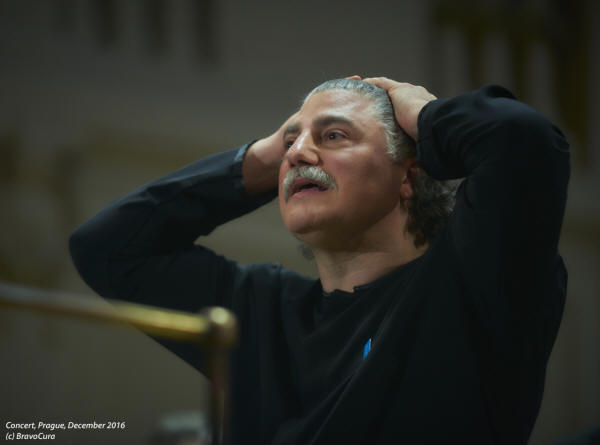
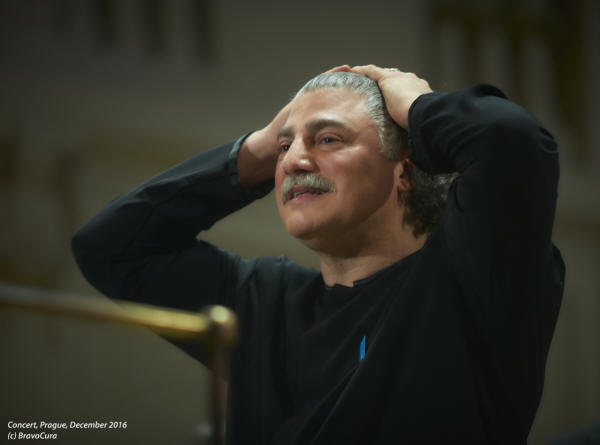
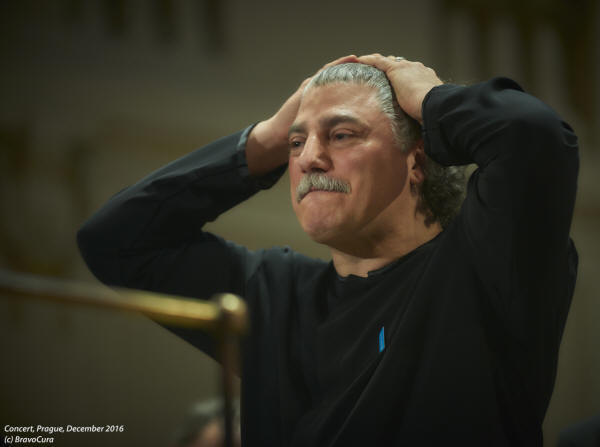






%20BC.jpg)
%20BC.jpg)
%20BC.jpg)

